알고리즘
1.[algorithm][프로그래머스][정렬] K번째 수

문제: 위 코드로 채점을 하면 정확성 테스트 케이스 2번째에서 계속 실패 테스트 2 〉 실패 (4.39ms, 37.7MB) 원인 배열의 sort 메소드를 그대로 사용하면 문자로 인식하고 정렬해서 해결 배열의 원소들이 숫자로 인식되어 정렬되도록 하자
2.[algorithm][leetcode] 104. Maximum Depth of Binary Tree

source: 104. Maximum Depth of Binary Tree
3.[algorithm][leetcode] 412. Fizz Buzz

i + ""을 사용하지 말고 Integer.toString()을 사용하자
5.[algorithm][leetcode] 344. Reverse String

Write a function that reverses a string. The input string is given as an array of characters char\[].Do not allocate extra space for another array, yo
6.[algorithm][leetcode] 326. Power of Three

7.[algorithm][leetcode] 283. Move Zeroes

8.[algorithm][leetcode] 107. Binary Tree Level Order Traversal II

Runtime: 56 ms, faster than 82.45% of JavaScript online submissions for Binary Tree Level Order Traversal II.Memory Usage: 34.7 MB, less than 100.00%
10.[algorithm][leetcode] 56. Merge Intervals

11.[algorithm][leetcode] 75. Sort Colors

12.[algorithm] GCD multiple number

13.Dynamic Connectivity: Union Find

WeightedQuickUnionUFWithPathCompression
14.알고리즘이 중요해지는 이유

(... 작성 중)O(n^2)은 연산이 증가할 수록 성능이 나빠진다 => O(n^2) 이하인 알고리즘을 선택해야 한다.
15.[leetcode] Longest Palindromic Substring

Given a string s, return the longest palindromic substring in s.Input: s = "babad"Output: "bab"Note: "aba" is also a valid answer.Input: s = "cbbd"Out
16.[프로그래머스]힙(Heap) 디스크 컨트롤러
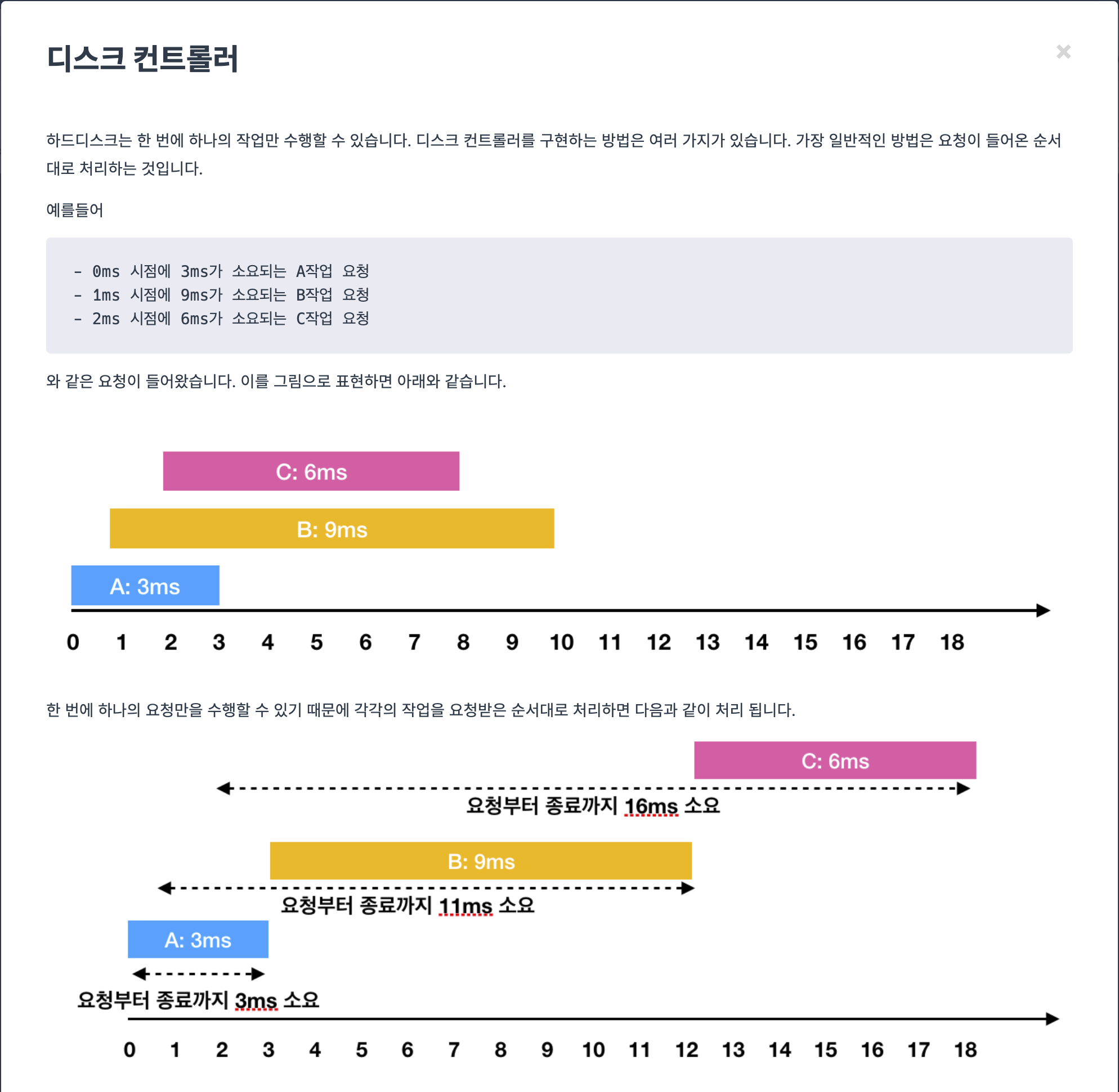
const log = console.log;function solution(jobs) { // 작업 갯수 const jobsLen = jobs.length;}
17.[leetcode] Valid Parentheses

Given a string s containing just the characters '(', ')', '{', '}', '' and '', determine if the input string is valid.An input string is valid if:Open
18.[leetcode] 1437. Check If All 1's Are at Least Length K Places Away
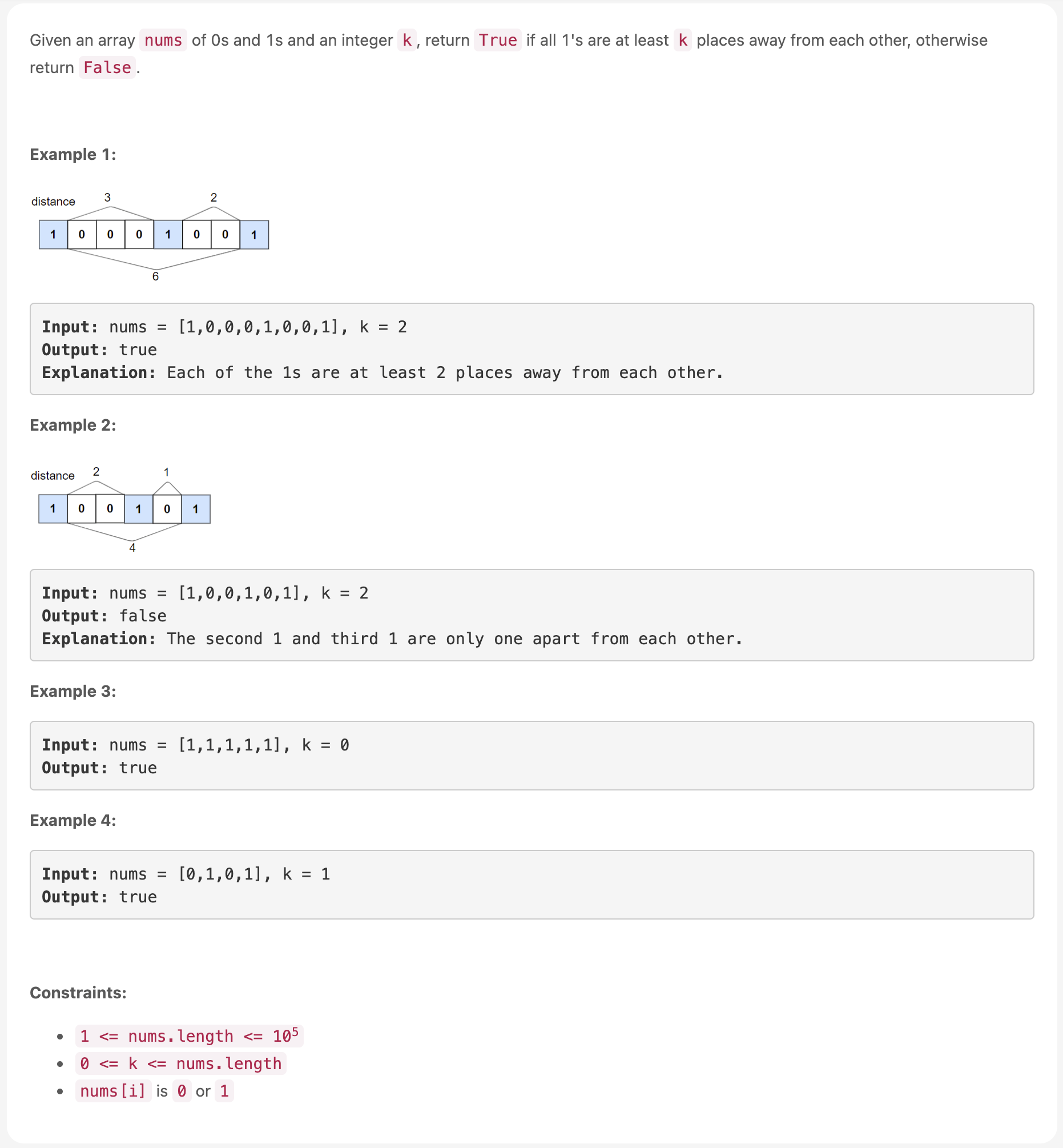
This is another way to solve this problem. It is a good example of using bitwise operation
19.[Sort] Quick Sort

time complexity => best: nlognspace complexity => best:
20.[leetcode] Concatenation of Consecutive Binary Numbers
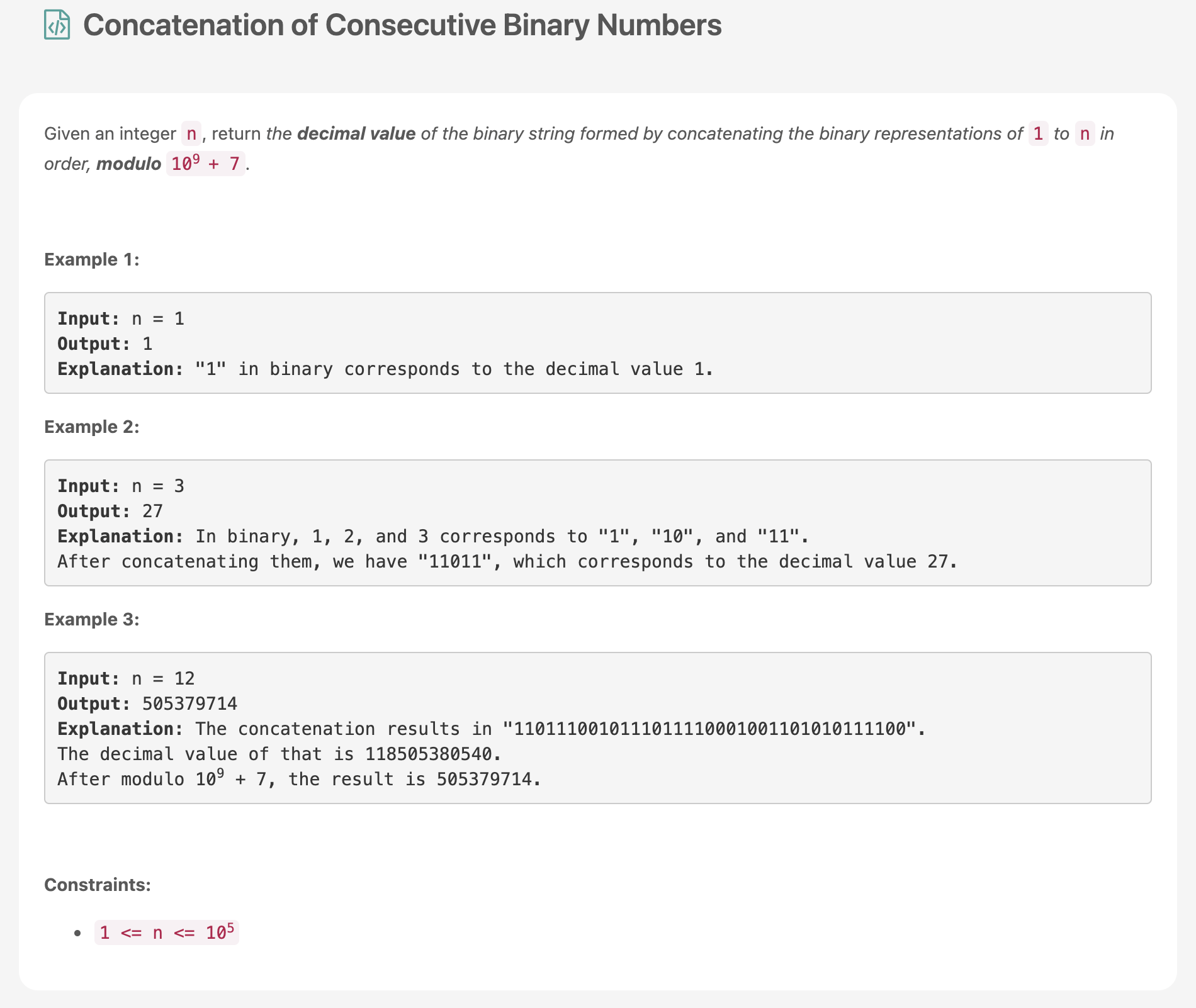
ComplexityTime: O(N)Space: O(1)
21.[Daily Coding] the largest sum of non-adjacent numbers

Good morning! Here's your coding interview problem for today.This problem was asked by Airbnb.Given a list of integers, write a function that returns
22.[leetcode] Linked List Cycle

Is it a node?Is it a array?what is pos? Is it a index where Node start repeating?Extreme case? head = null?constraints?where does this come from?using
23.[leetcode] 206. Reverse Linked List

Time: O(N)Space: O(1), constant
24.[leetcode] 242. Valid Anagram
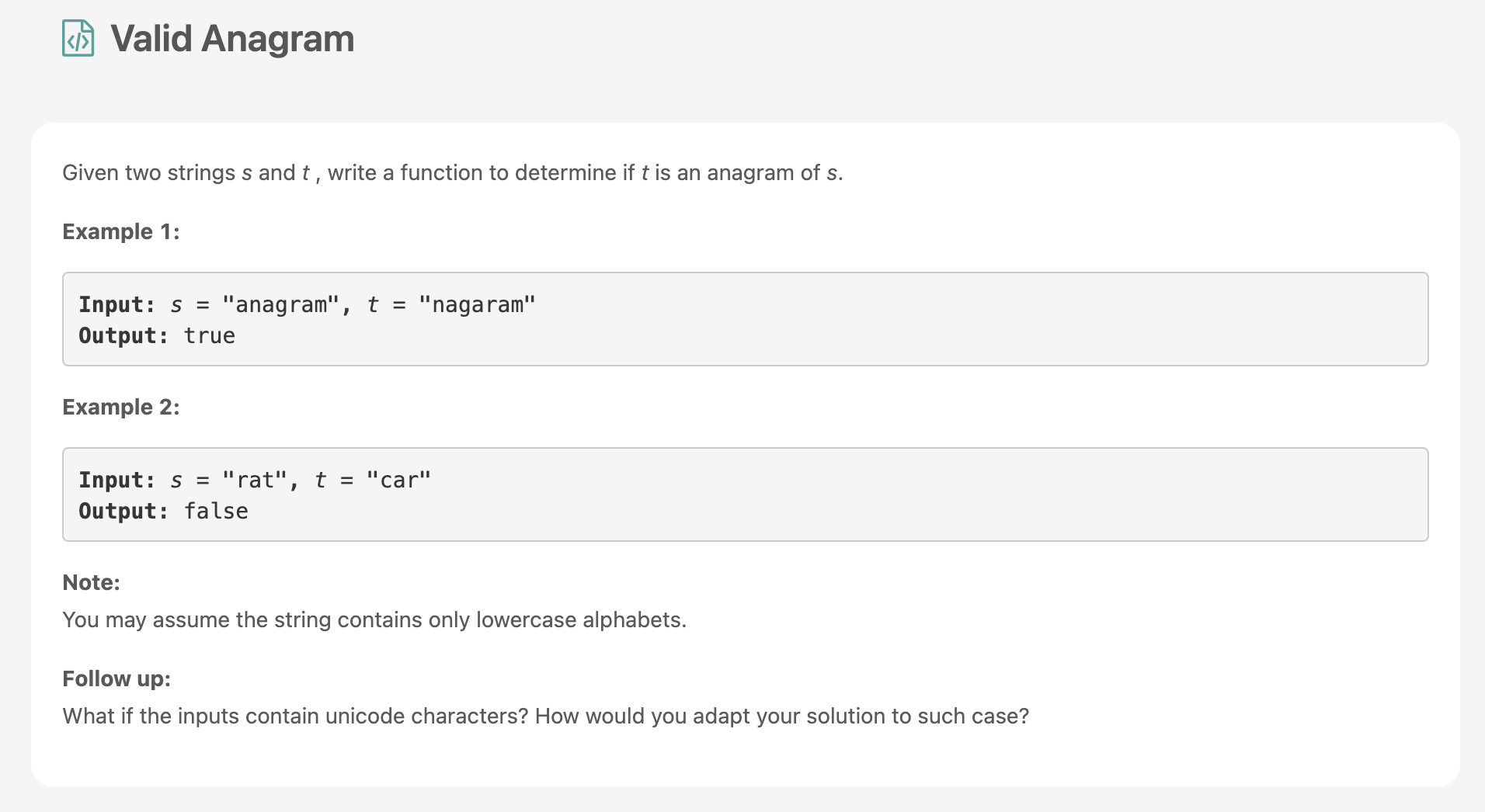
Time: O(nlogn) => sorting nlogn, comparing n: nlognSpace: O(n) or O(1) => some languages, a string is an char array
25.[leetcode] Number of Steps to Reduce a Number to Zero
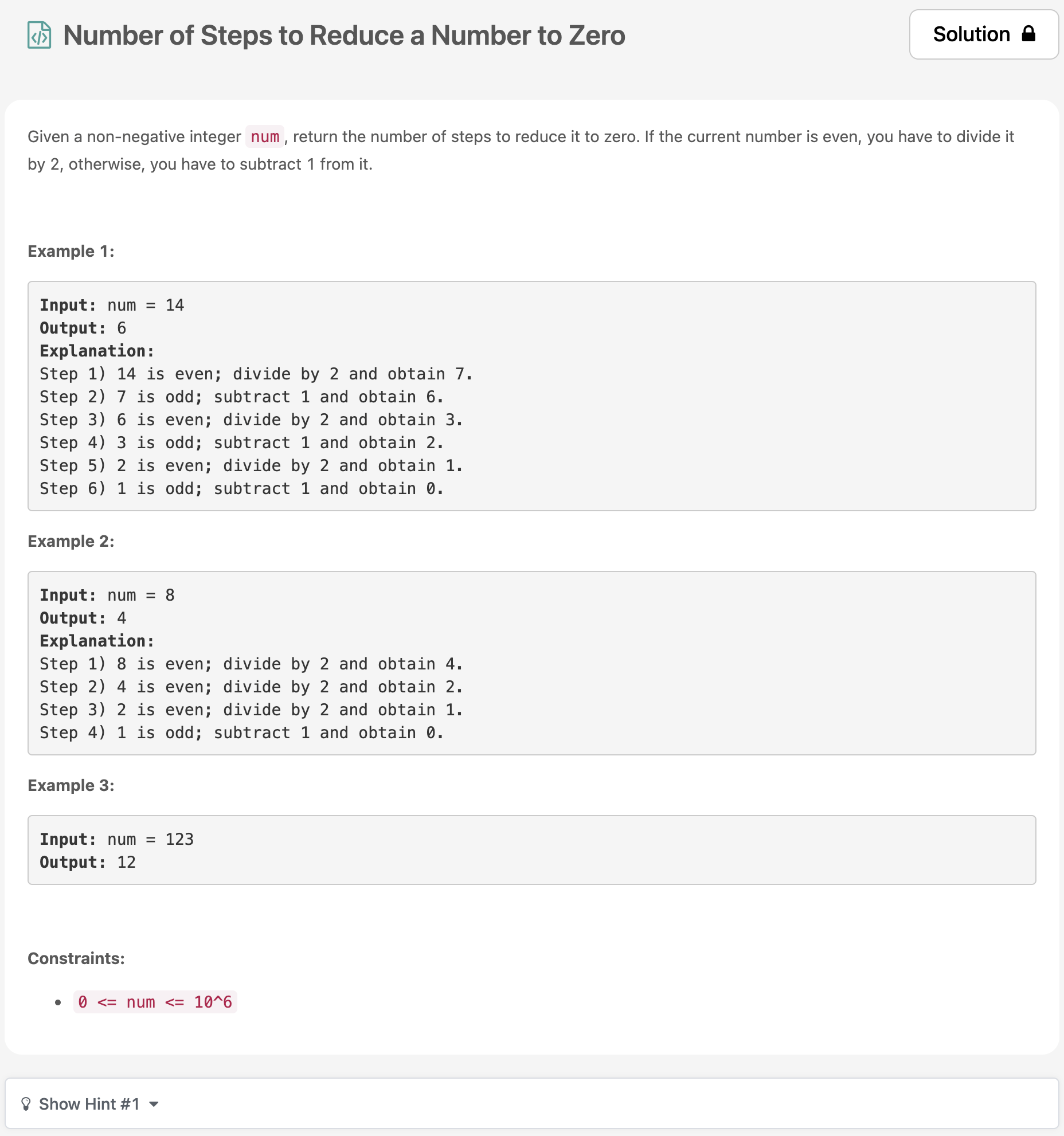
Time: O(N), ex) 2 => need 2 stepsSpace: O(1), just need count
26.[daily coding problem] Counting Unival Subtrees
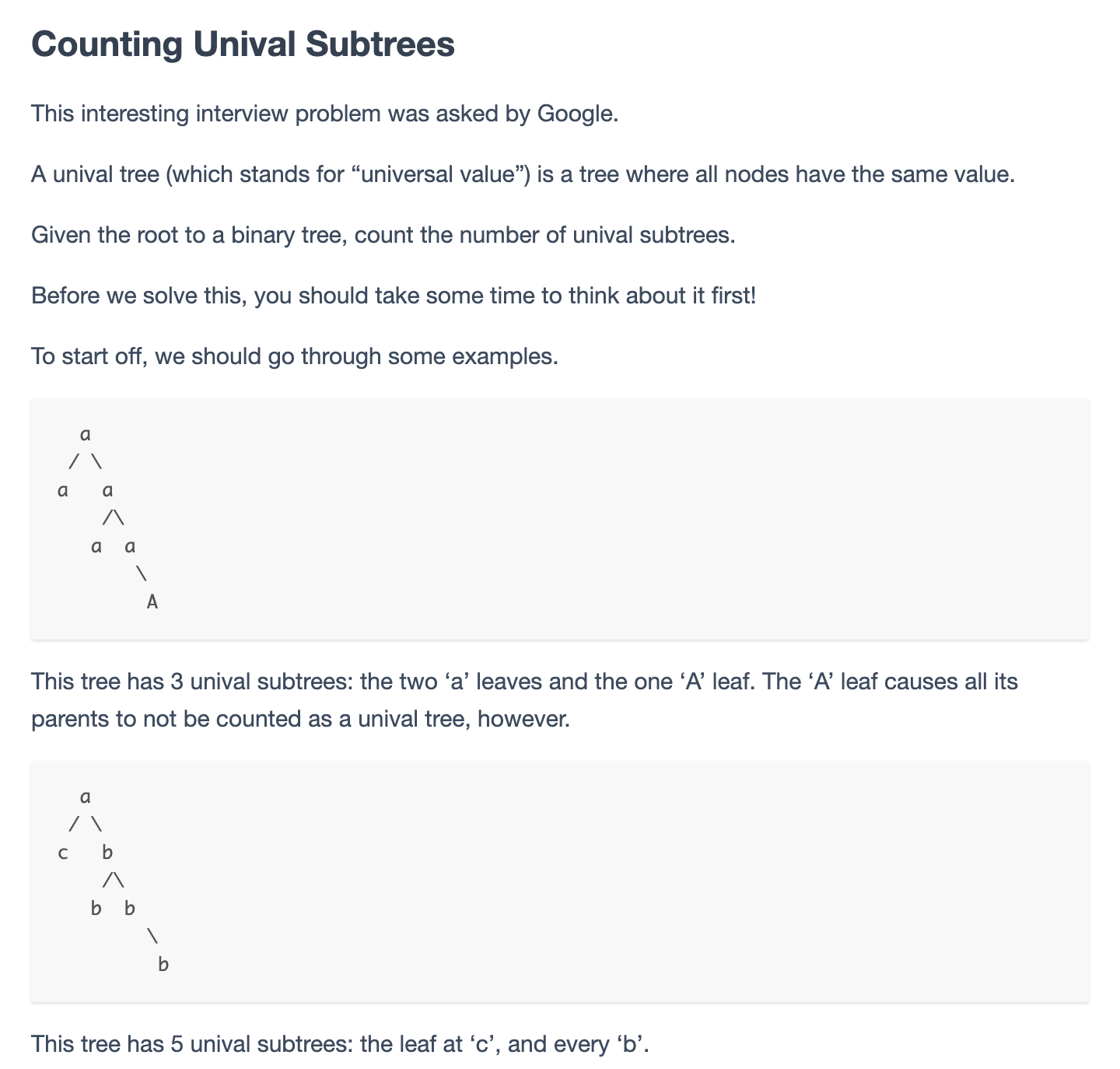
Time: O(n^2), cuz every time check if root is a unival tree, need to evalueate subtreesSpace: O(1)Better solutionwhat if count unival tree from each l
27.[leetcode] Shortest Path in Binary Matrix
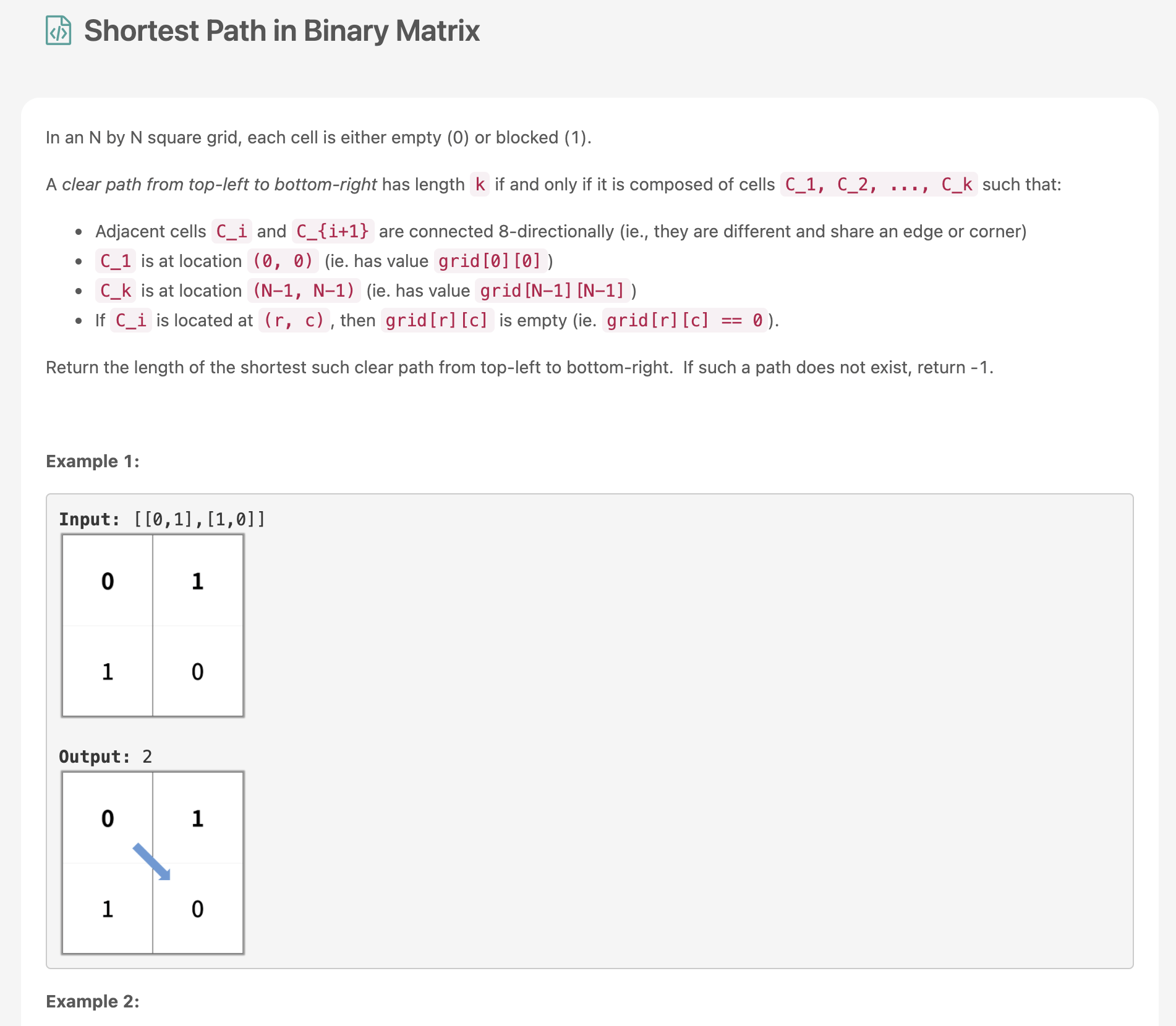
Time: O()Space:O(n)
28.[leetcode] Is Graph Bipartite?

node color == adjacent node color must be false for a graph to be a bipartiteTime: O(N), iter every node in the graph once and iter its child onceSpac
29.One pass

iter a list only once
30.constant space

Constance space means no matter how n increases the space ur code using stays equal.
31.[leetcode] the K Weakest Rows in a Matrix

Time: O(mn + nlogn)Space: O(m + k)
32.[leetcode] Container With Most Water
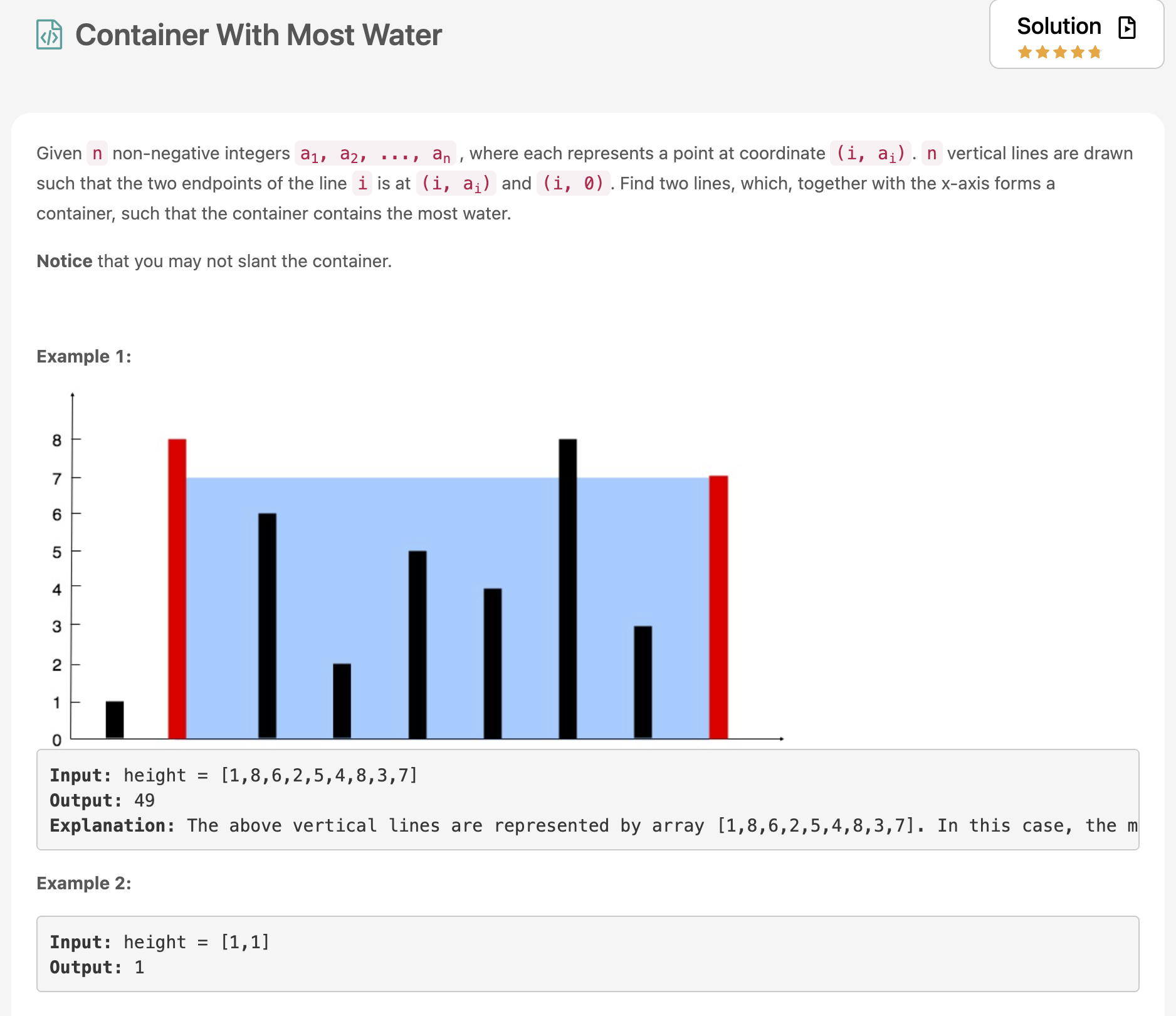
Time: O(N)Space: O(1)
33.[leetcode] arithmetic slices

Time: O(N)Space: O(N), how to make this to O(1)?O(1) space
34.[leetcode] Roman to Integer
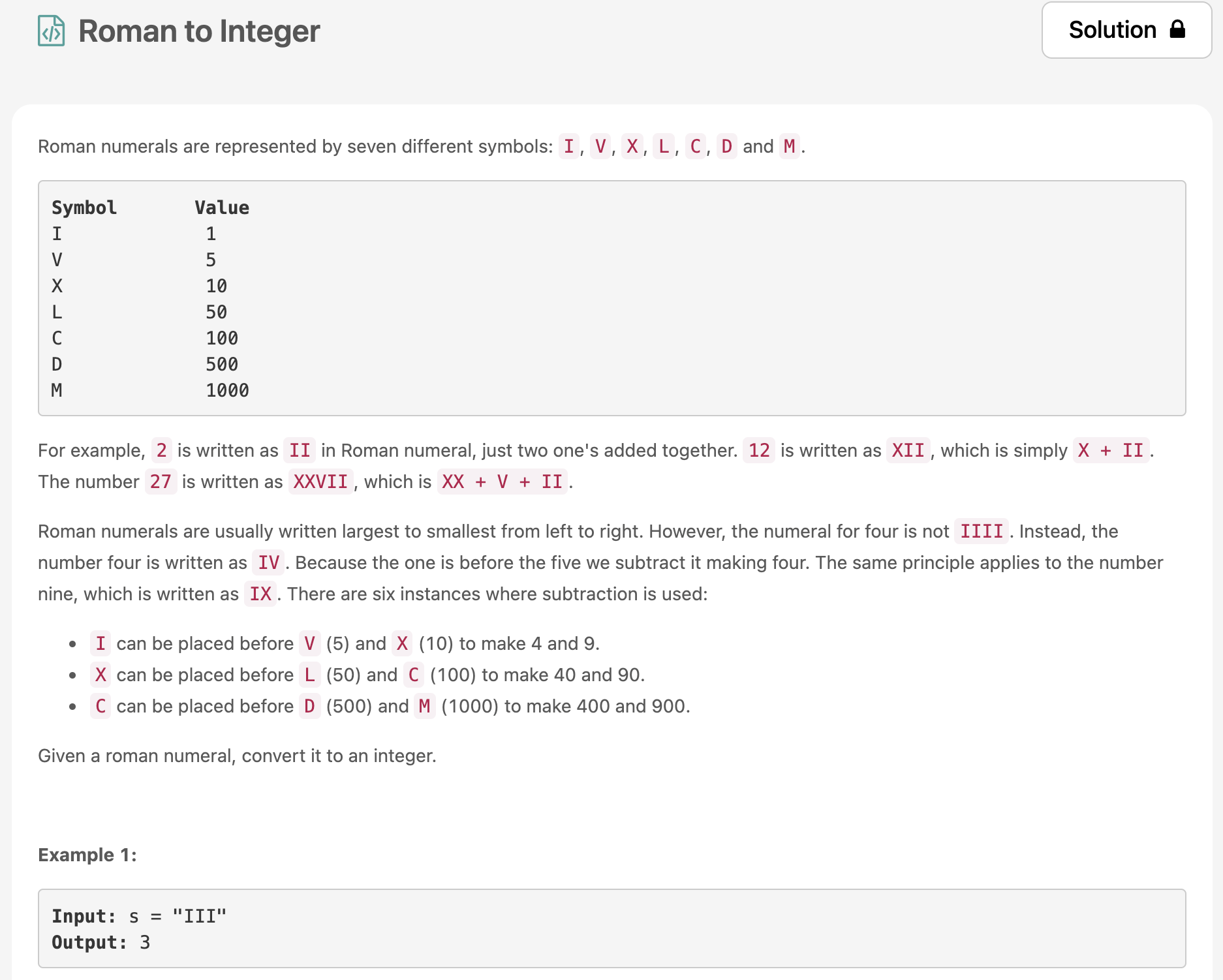
Time: O(N),Space: O(1), some language String is a char\[]
35.[leetcode] broken calculator
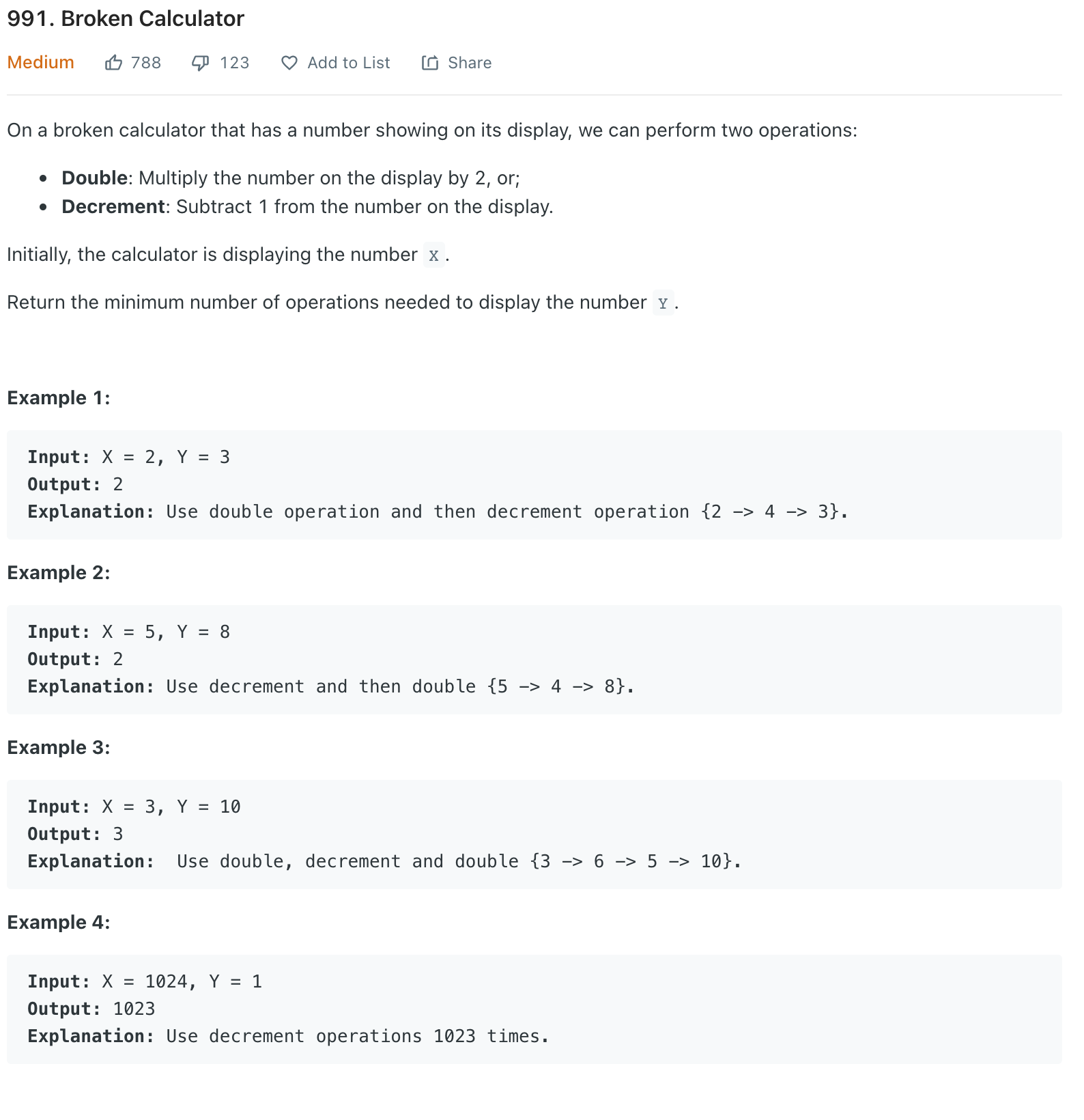
with whilewith recursionTime: O(logY)Space: O(1), only cnt;
36.[leetcode] Longest Word in Dictionary through Deleting
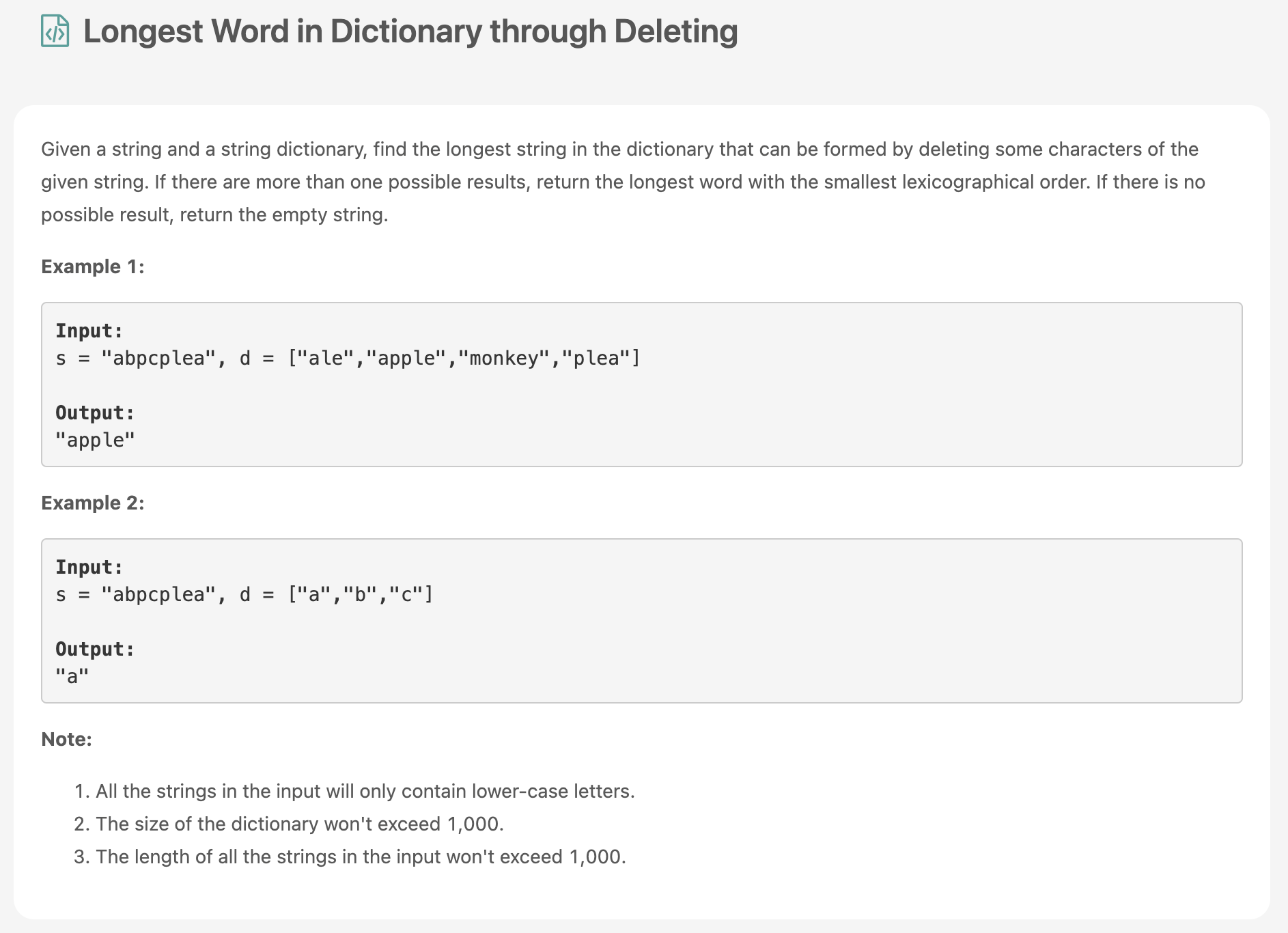
problem code
37.[daily coding] Minimum insertions to form a palindrome
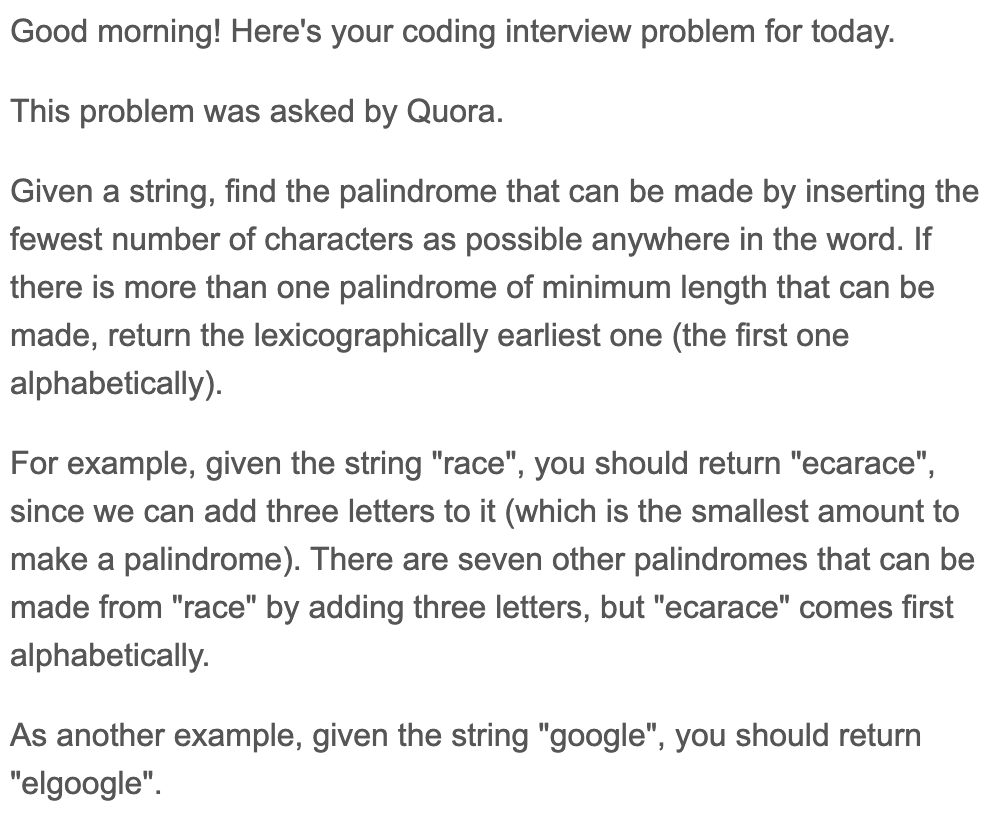
problem coding
38.[leetcode] Search a 2D Matrix II
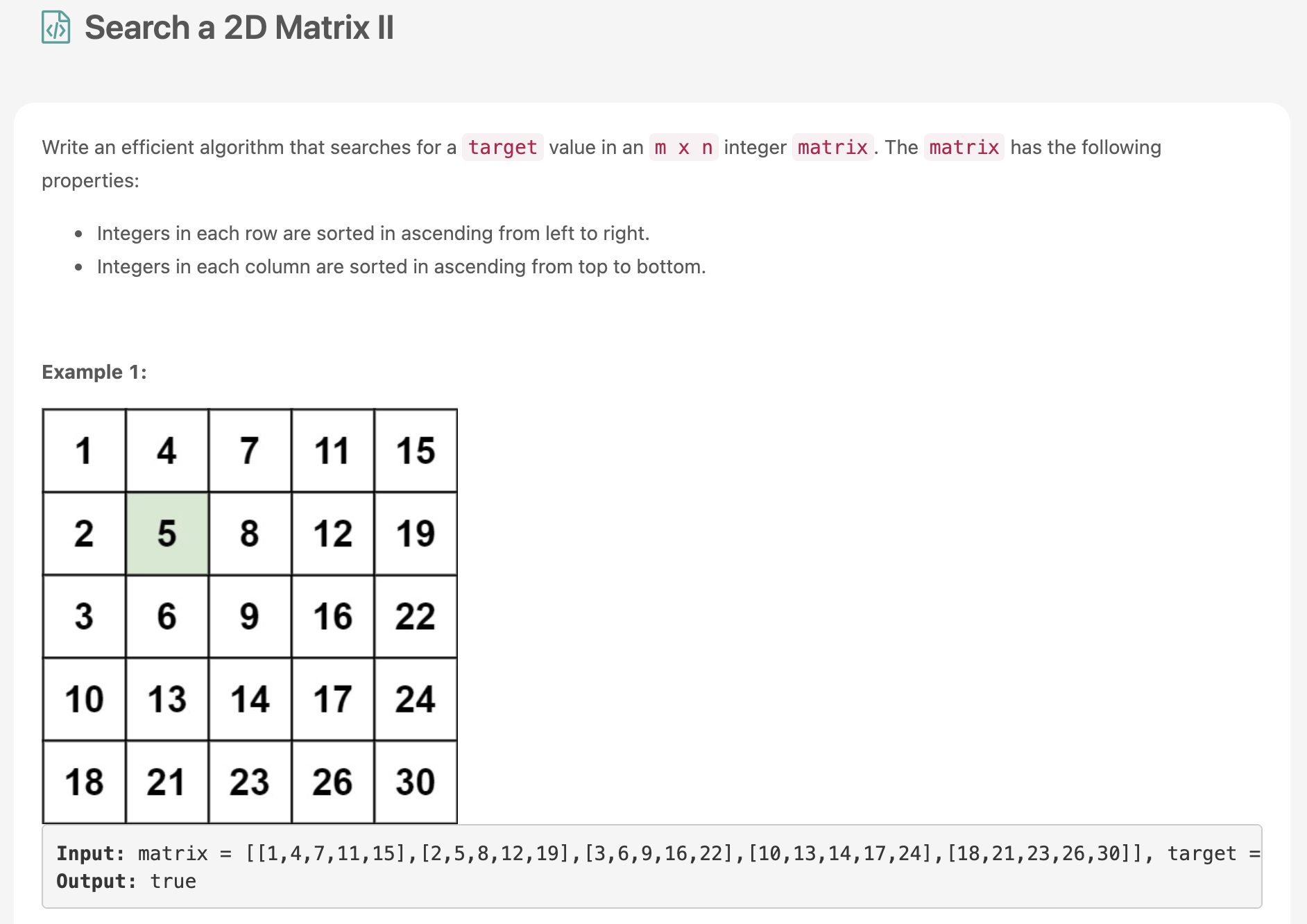
problem c
39.[leetcode] Score of Parentheses
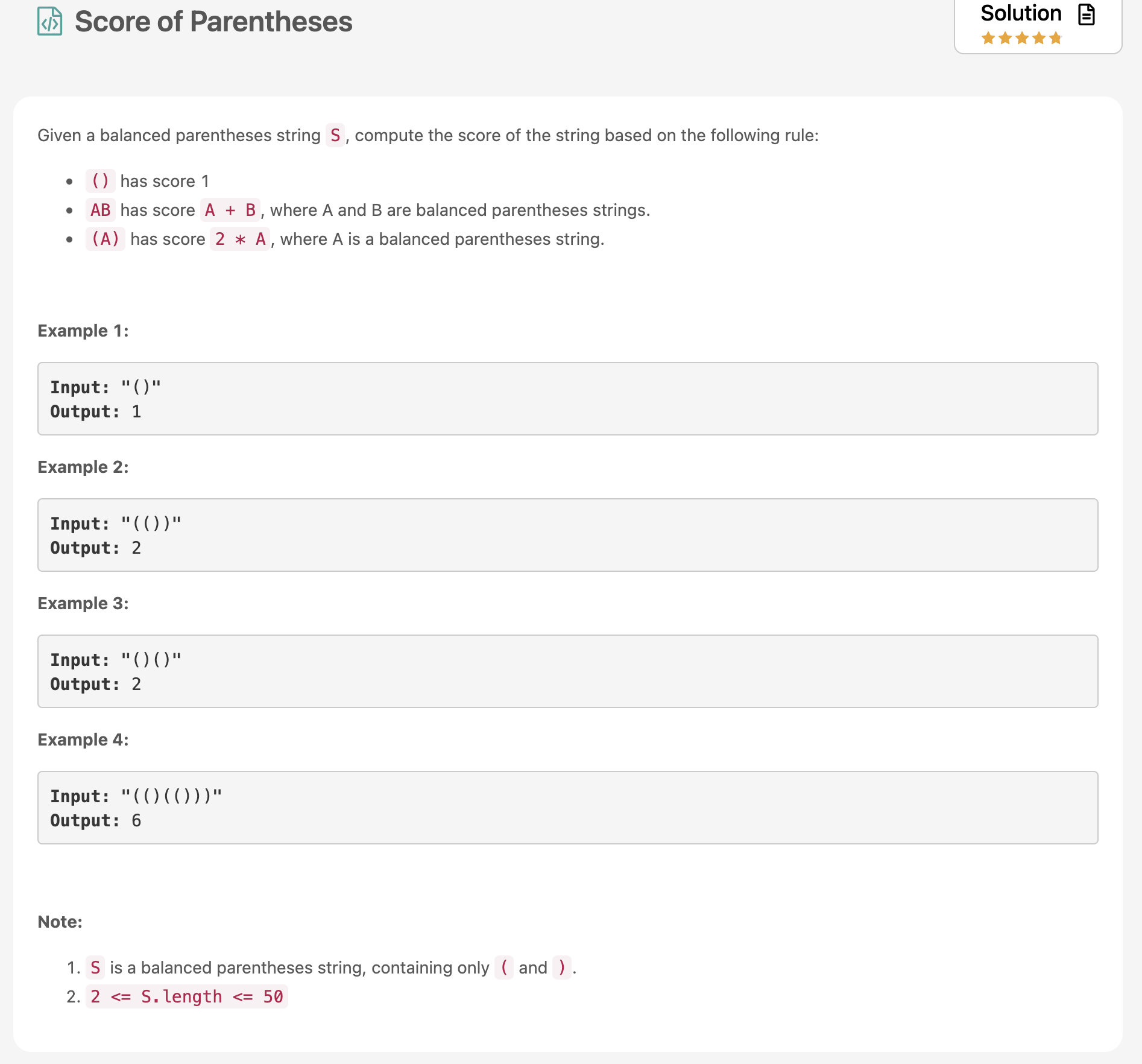
Time: O(N)Space: O(N)from leetcode "SlovakUnion"The idea is a(x + y) <=> ax + ayTIME: O(N)Space: O(1)
40.[leetcode] Shortest Unsorted Continuous Subarray

Time: O(N)Space: O(1)but code is too longTime: O(nlogn), 100 times slower than 1st try
41.[leetcode] validate stack sequences
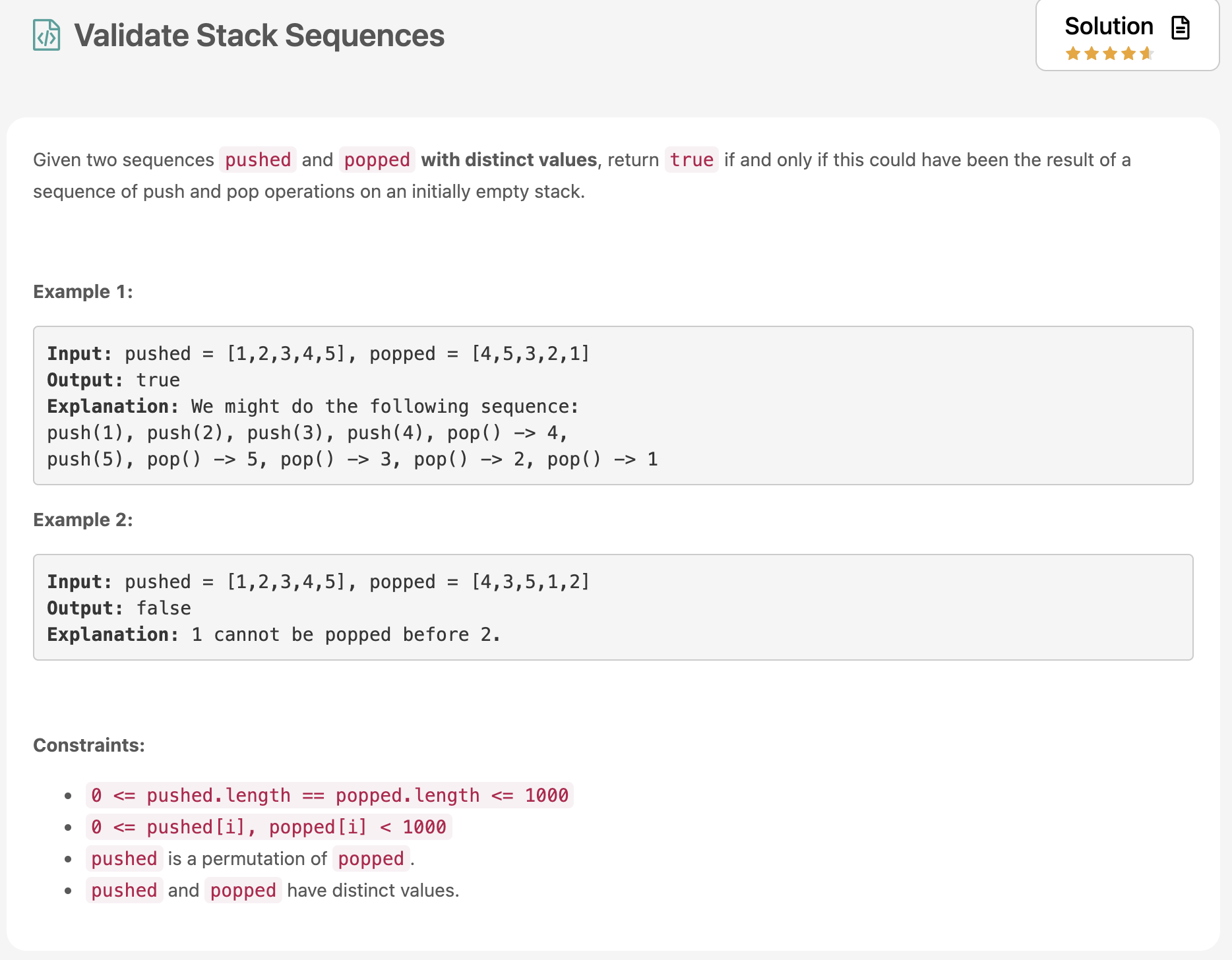
push -> peek: check if pop element is equal if yes -> pop, continueif no -> pushbreak ifpop index is equal to length of pushed aray andstack is not em
42.[leetcode] Divide Two Integers
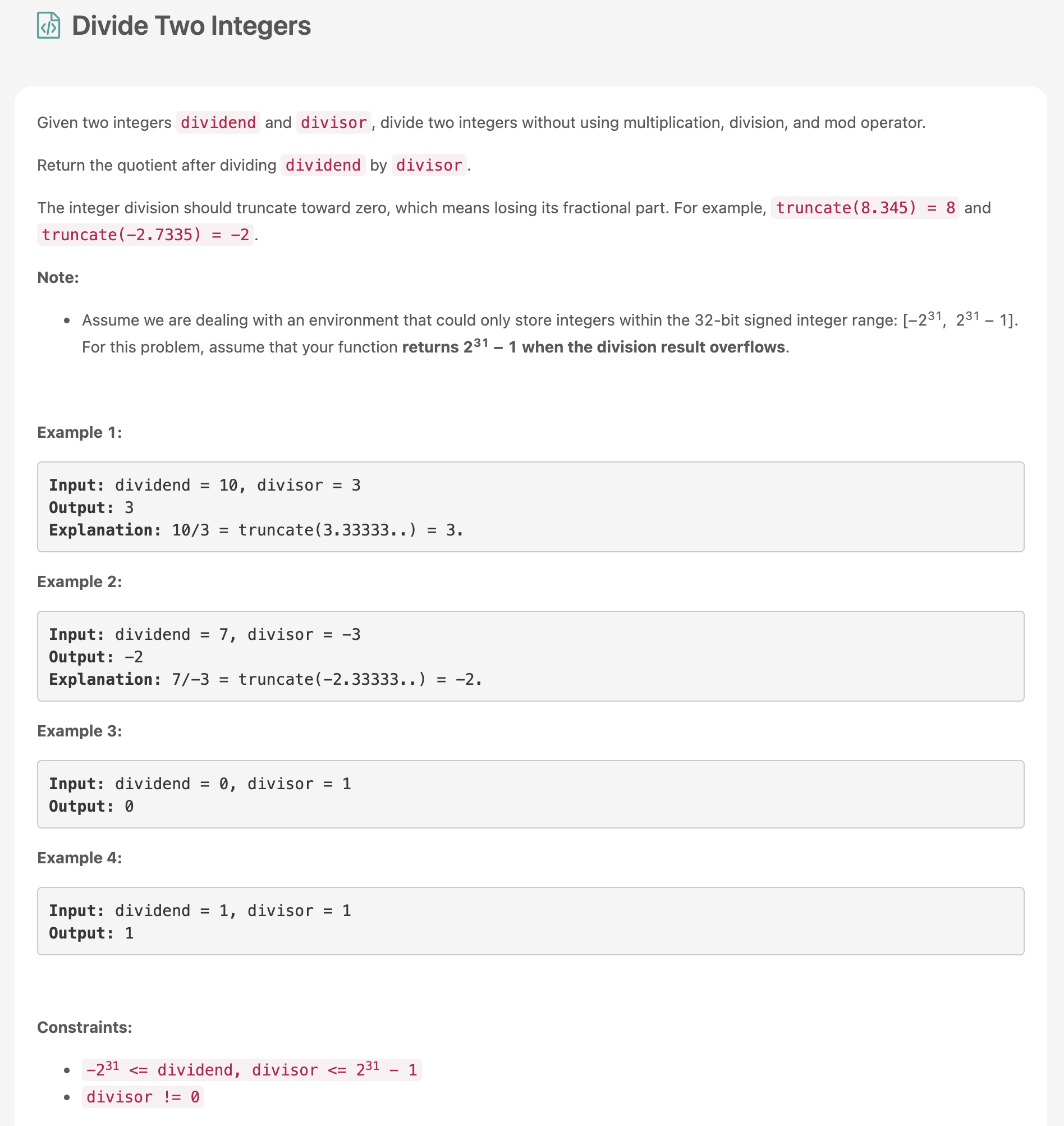
problem code
43.[leetcode] Maximum Frequency Stack
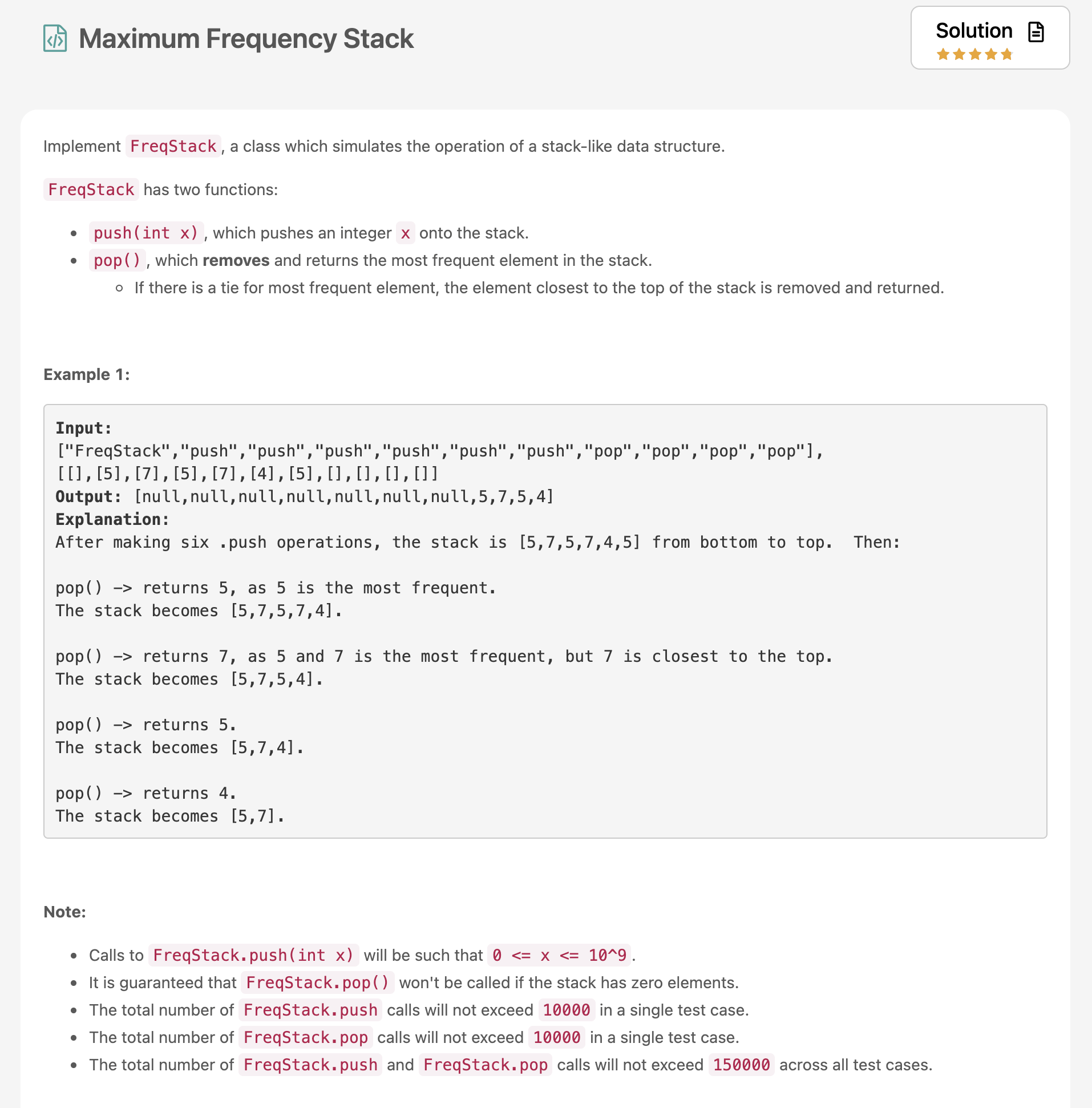
I don't need to track the sequence of numbers....just need to track max frequency and frequency of each numbervar FreqStack = function() { this.top
44.[leetcode]575. Distribute Candies
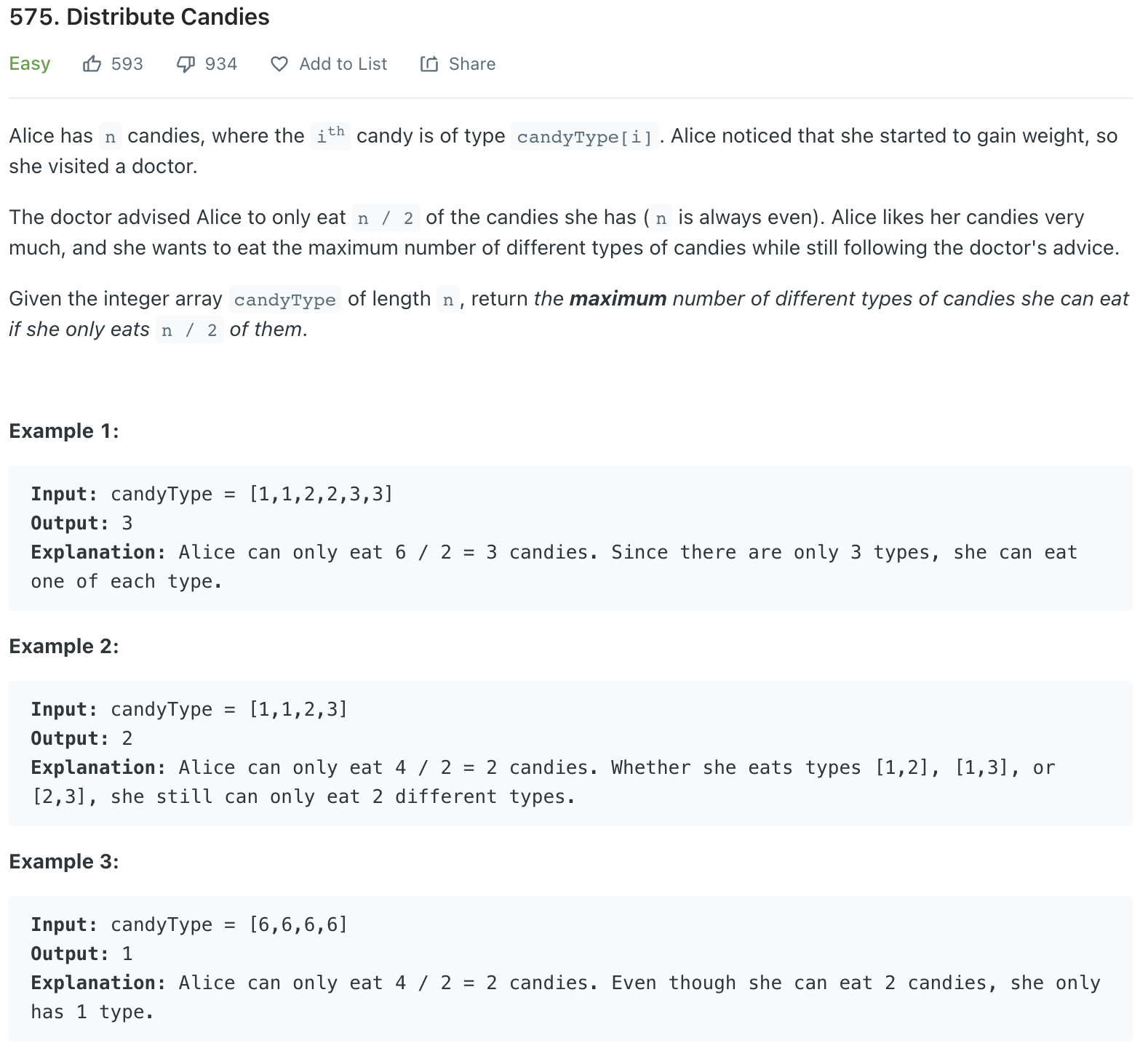
problem code 1st try
45.[leetcode]Set Mismatch
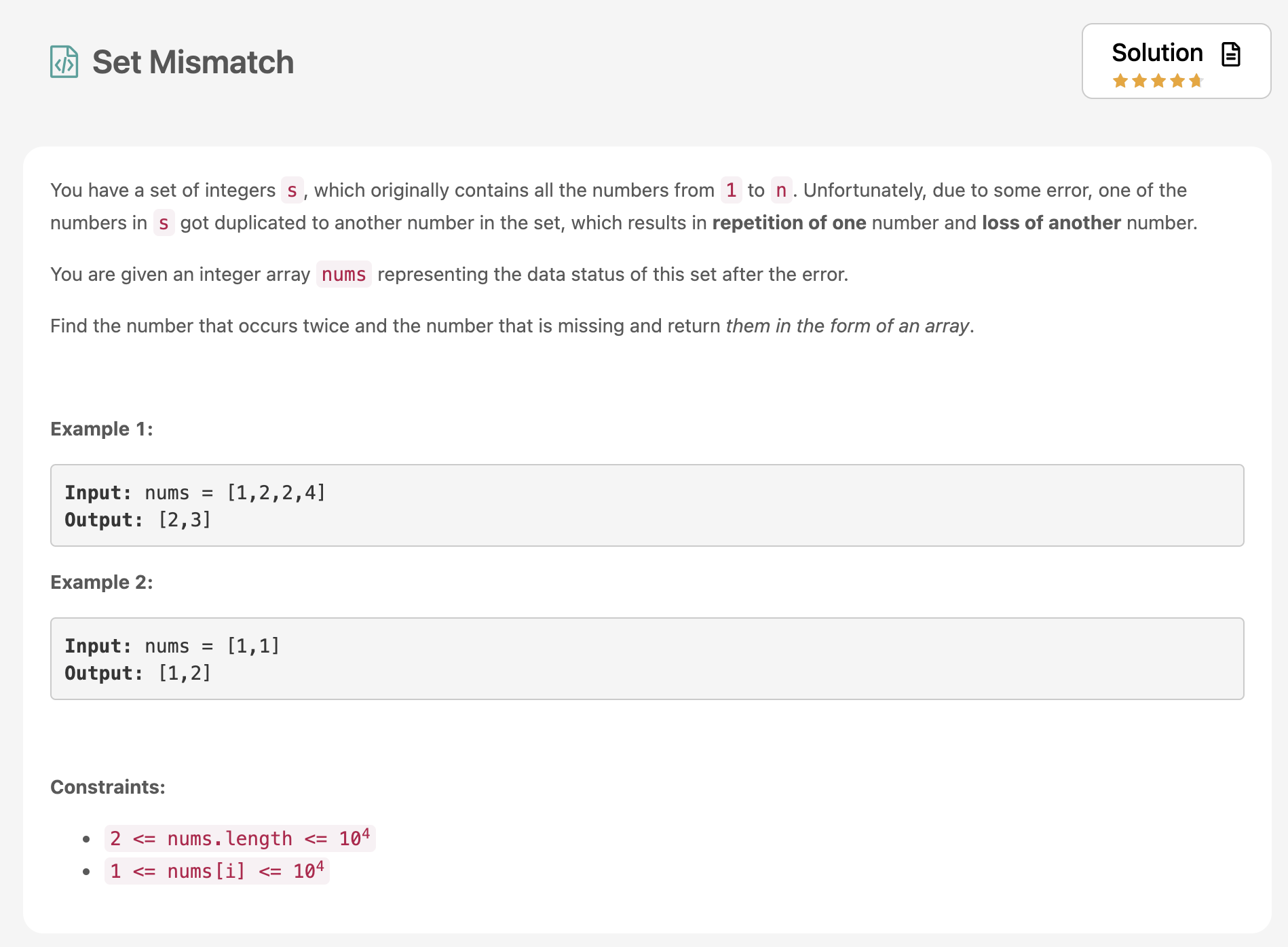
Time: O(N); two for loop iterating NSpace: O(N); HashMap contains N elements at mostTime: O(nlogn); sortingSpace: O(1)
46.[leetcode] missing number
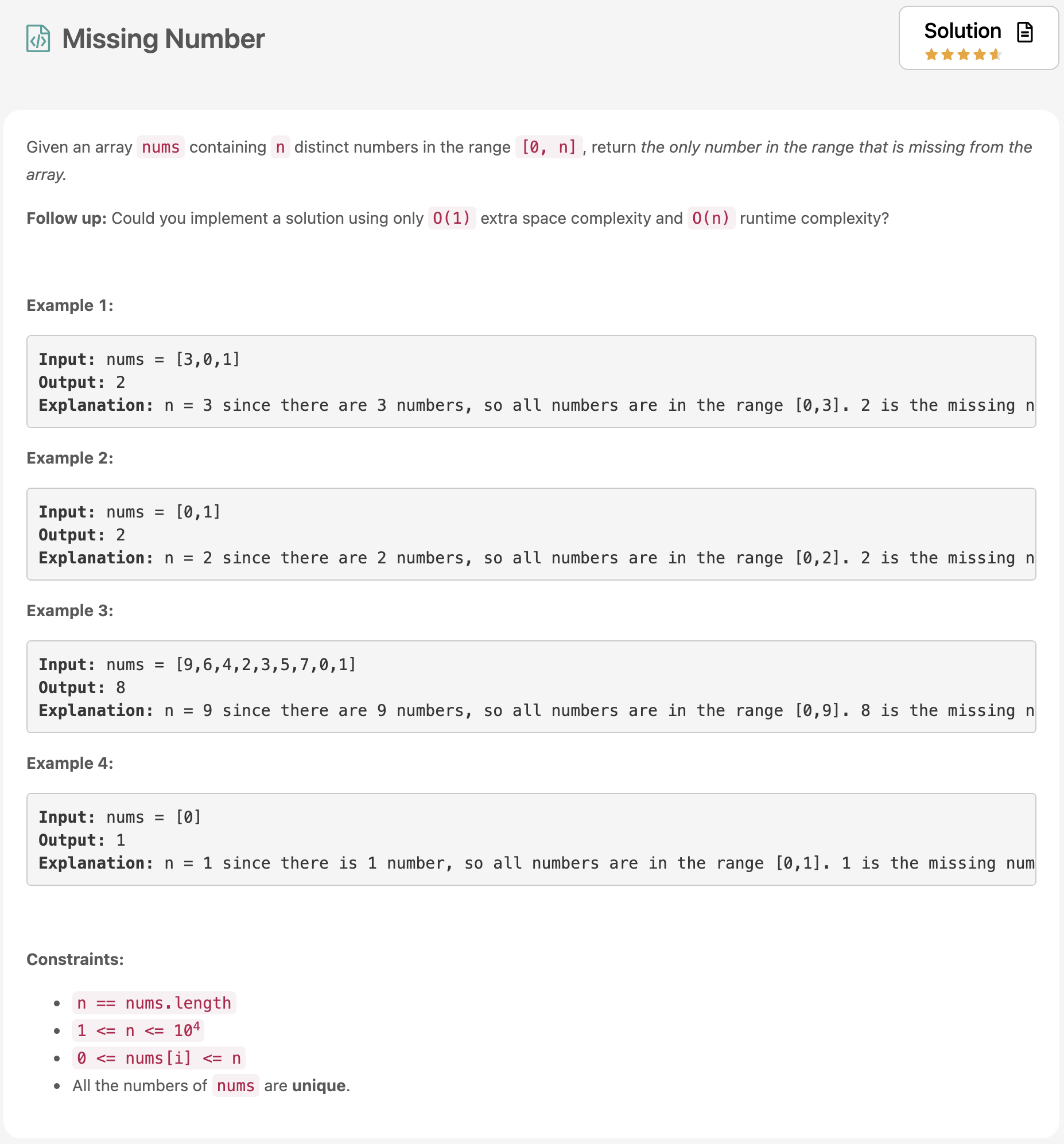
Time: O(NlogN)Space: O(1)
47.[leetcode] Intersection of Two Linked Lists
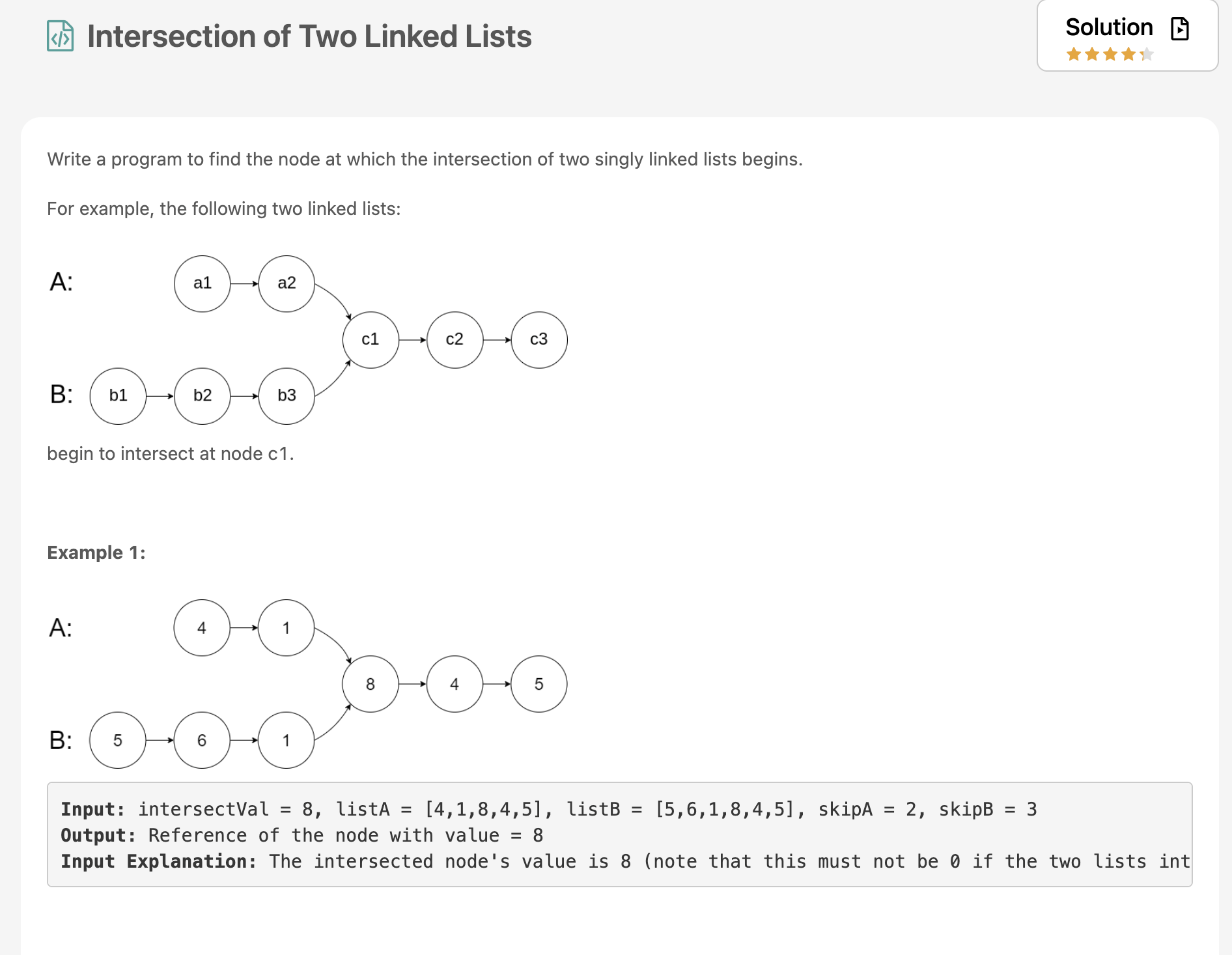
if there is a ListNode that both A and B have, the reference address of the ListNode is equalTime: O(N)Space: O(N)
48.[leetcode] Average of Levels in Binary Tree
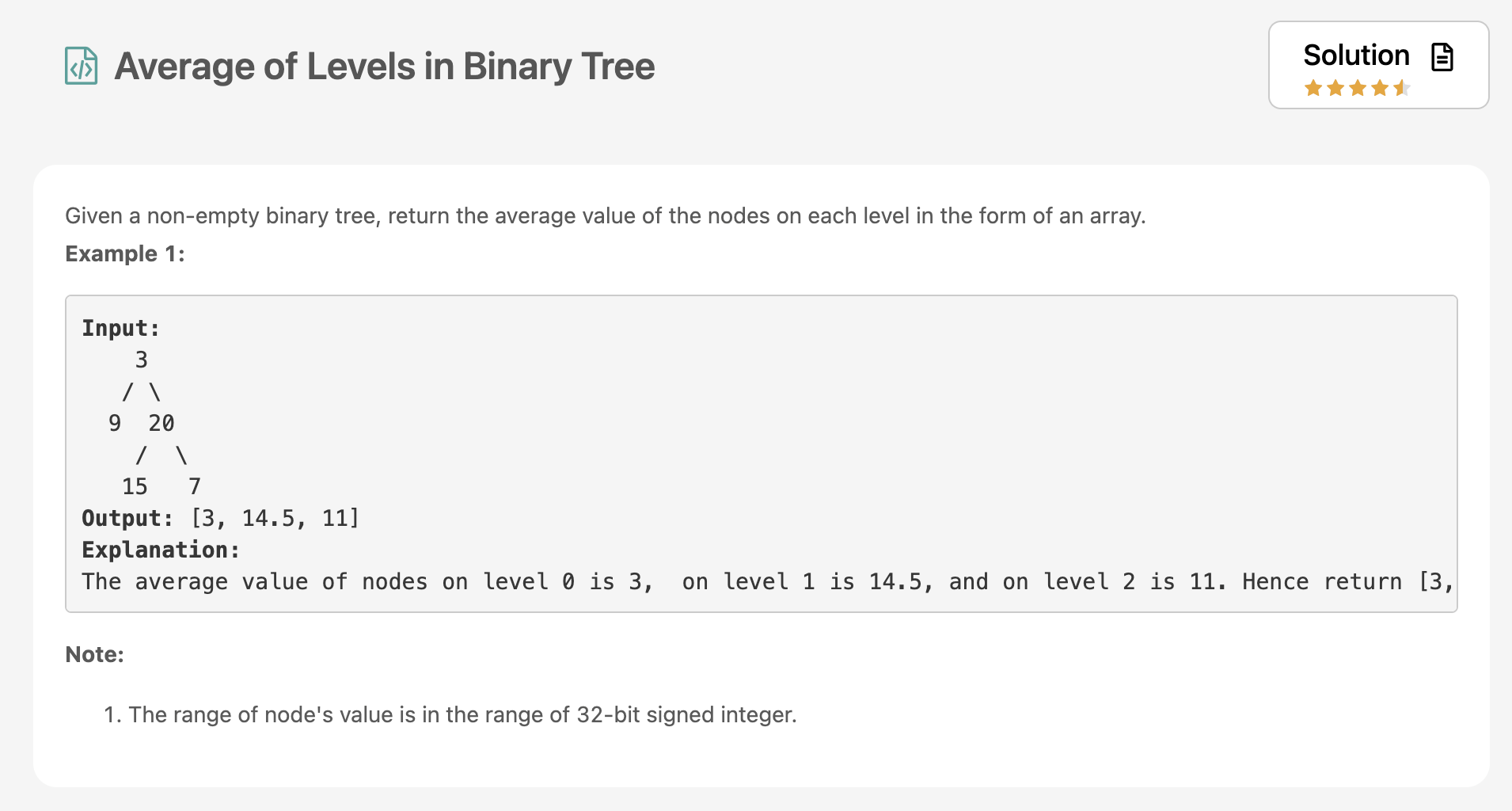
Time: O(N)Space: O(level of Tree)
49.[daily coding] longest palindromic continuous substring

abba => bb is palindromic. for (x)bb(y), x == y then, it is palindromic
50.[leetcode] Design HashMap
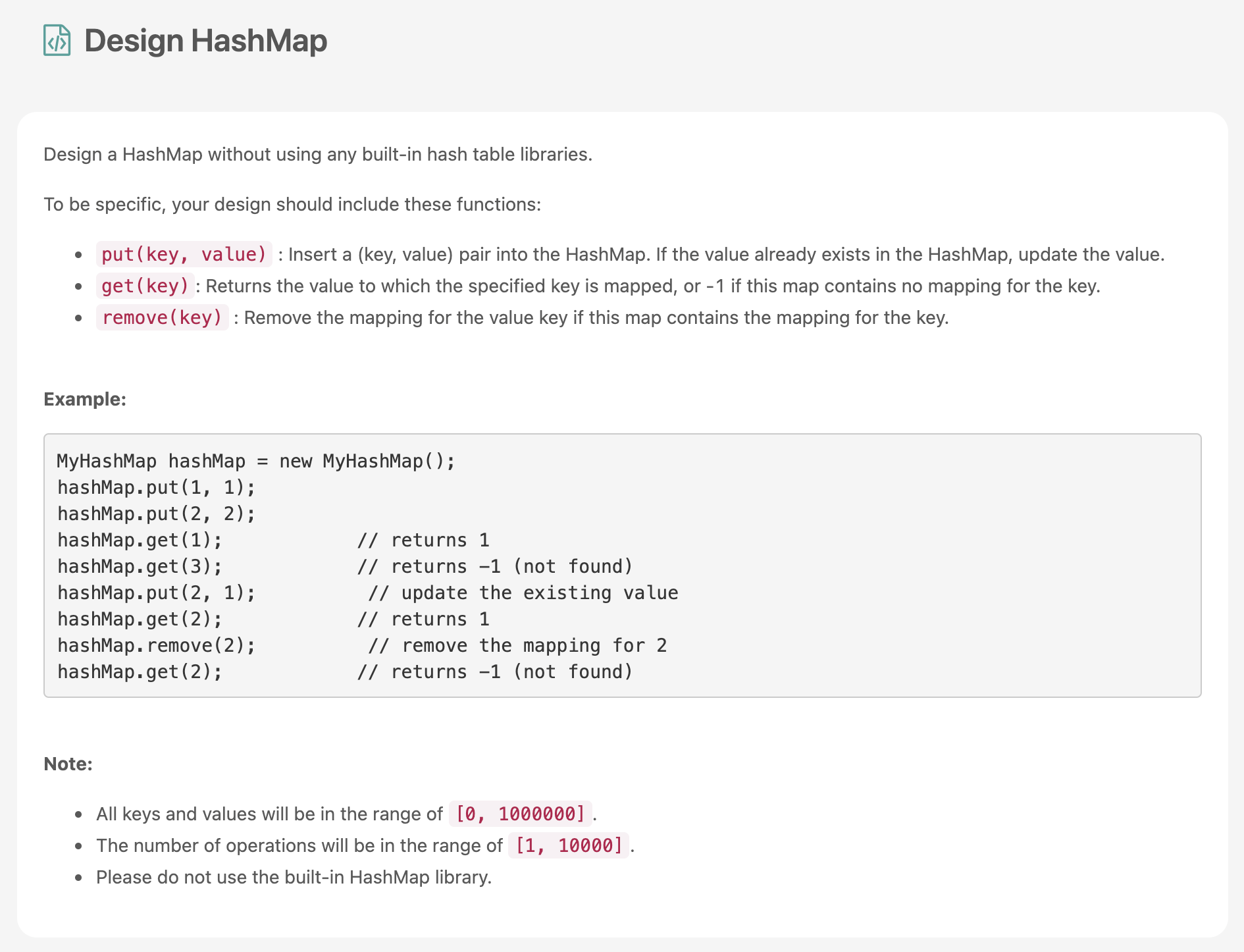
problem code 1st try: simple
51.[leetcode] Remove Palindromic Subsequences
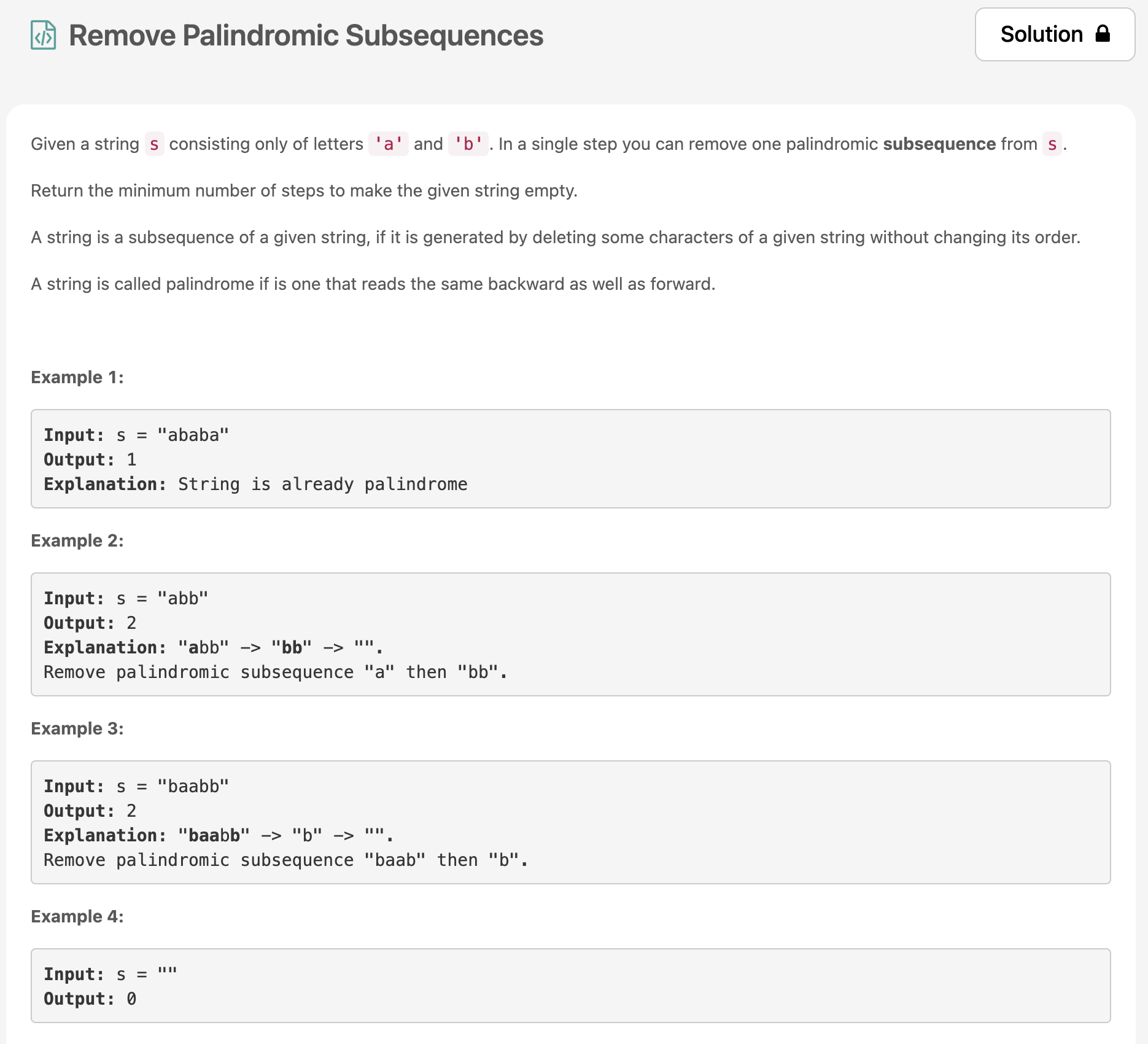
need to understand difference between substrings and subsequencesabbab => subsequences = aa, bbb, abba, abbab, ... is palindromic subsequenceswe can r
52.[daily coding] Maximum continuous sum

problem code 1st try: Brute force Time: O(N^3) Space: O(1) 2nd try: sliding door
53.(작성 중)[leetcode] Add One Row to Tree
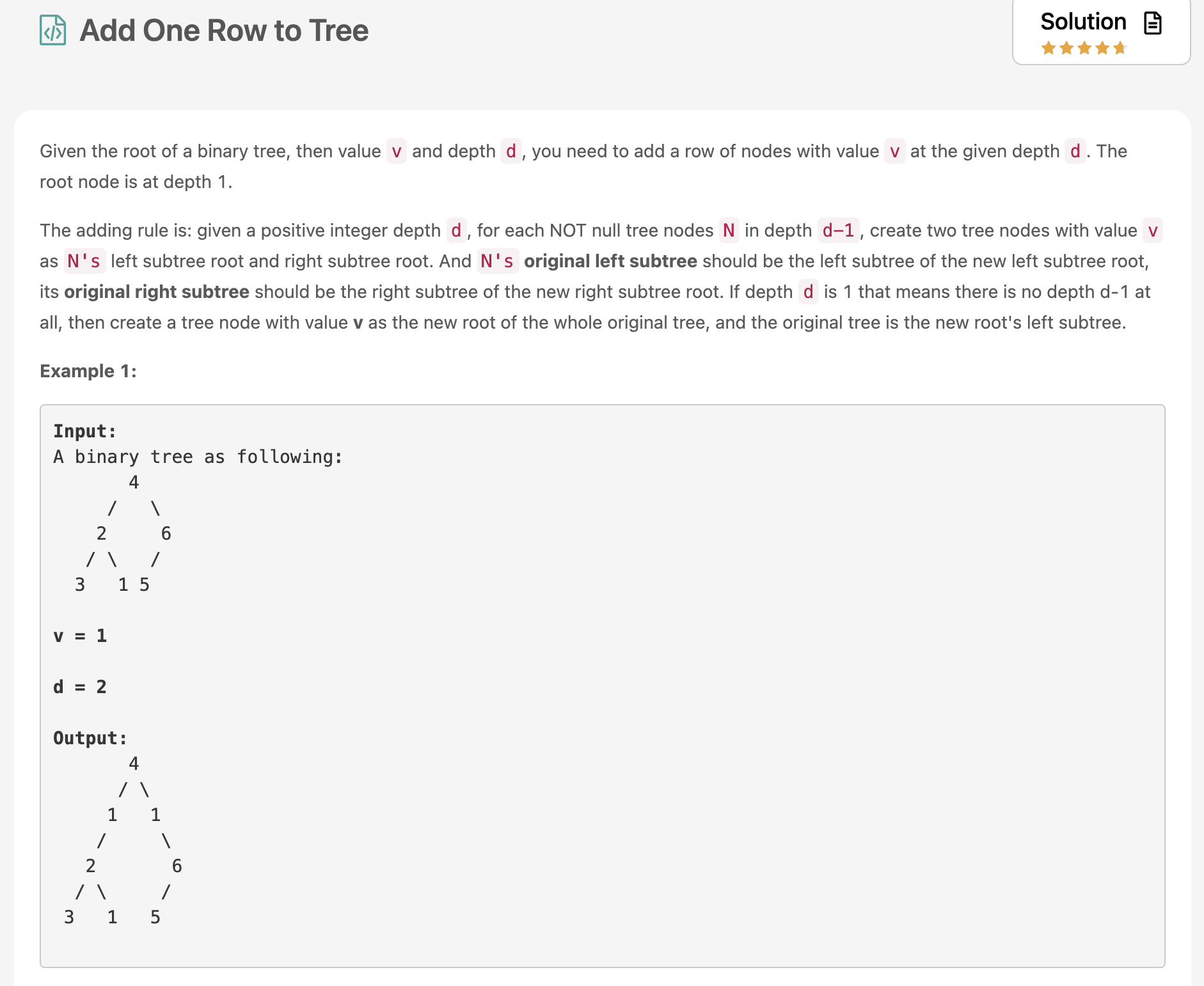
problem c
54.[leetcode] Integer to Roman
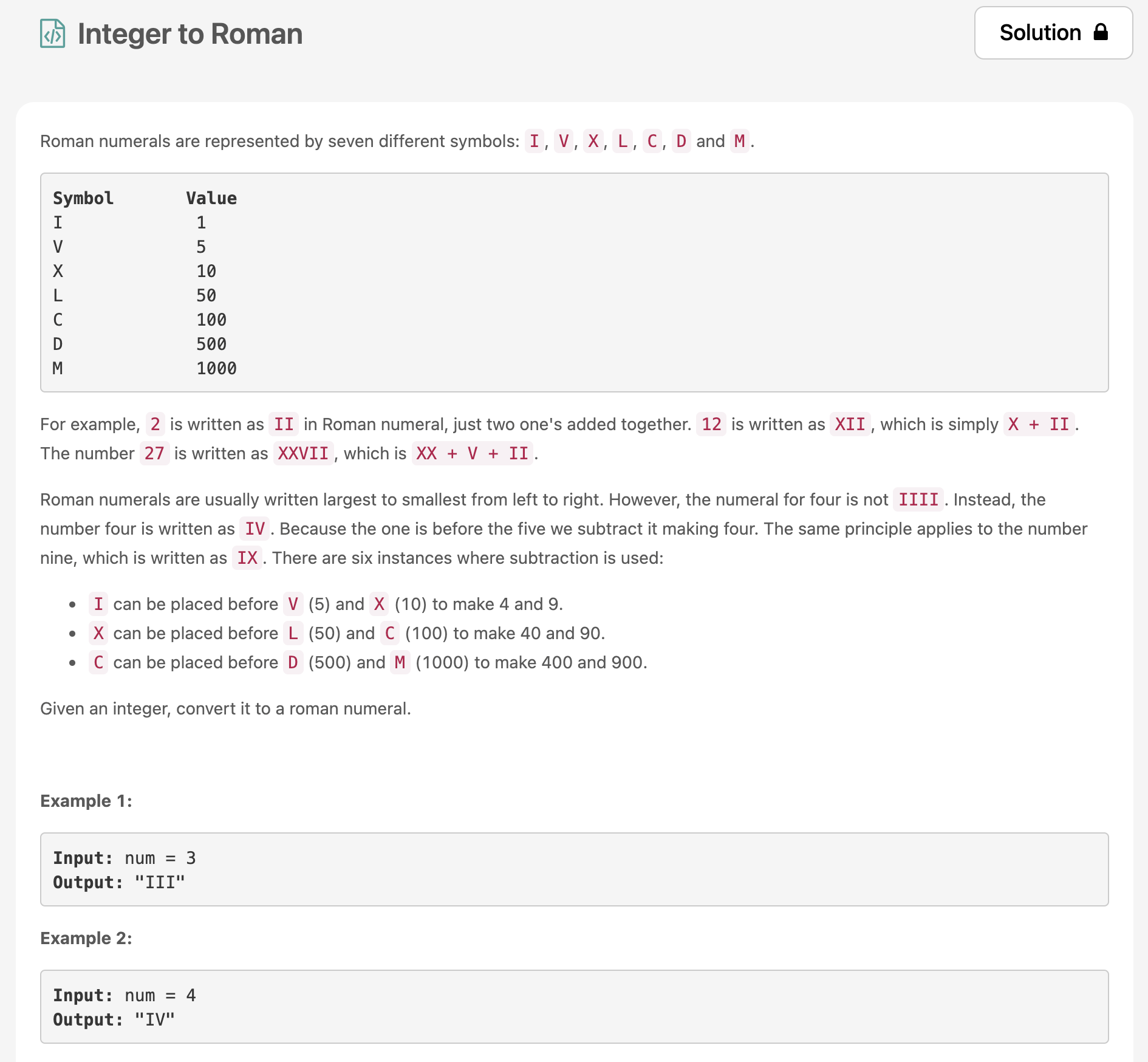
add 4xx 9xx where x is 0 or '', this problem becomes a lot easier.Time: O(1)Space: O(1)
55.[leetcode] Coin Change

problem co
56.[leetcode] Check if a String contains all binary codes of size K
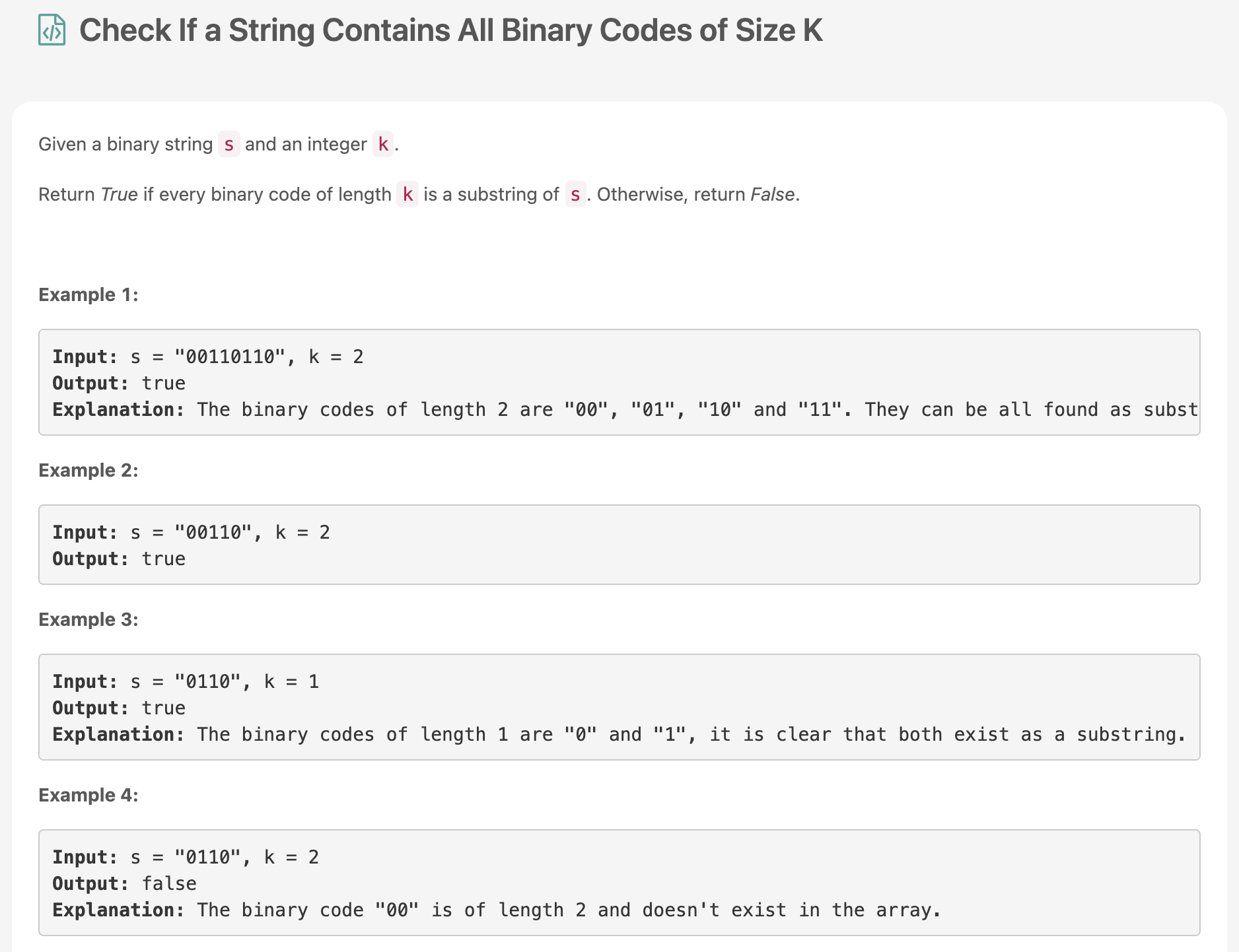
2nd try:
57.[leetcode] Binary Trees With Factors
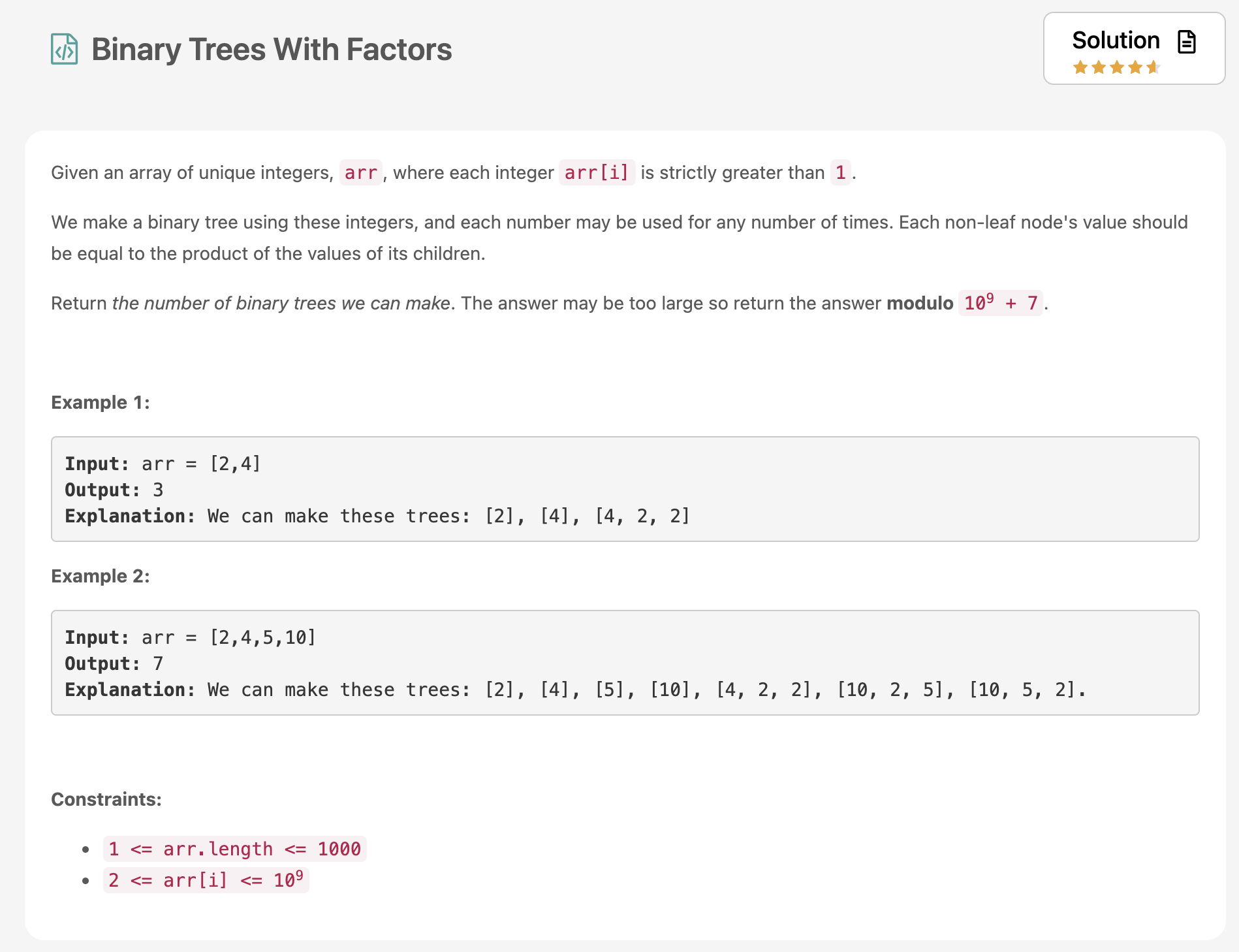
problem code
58.[leetcode] Reordered Power of 2
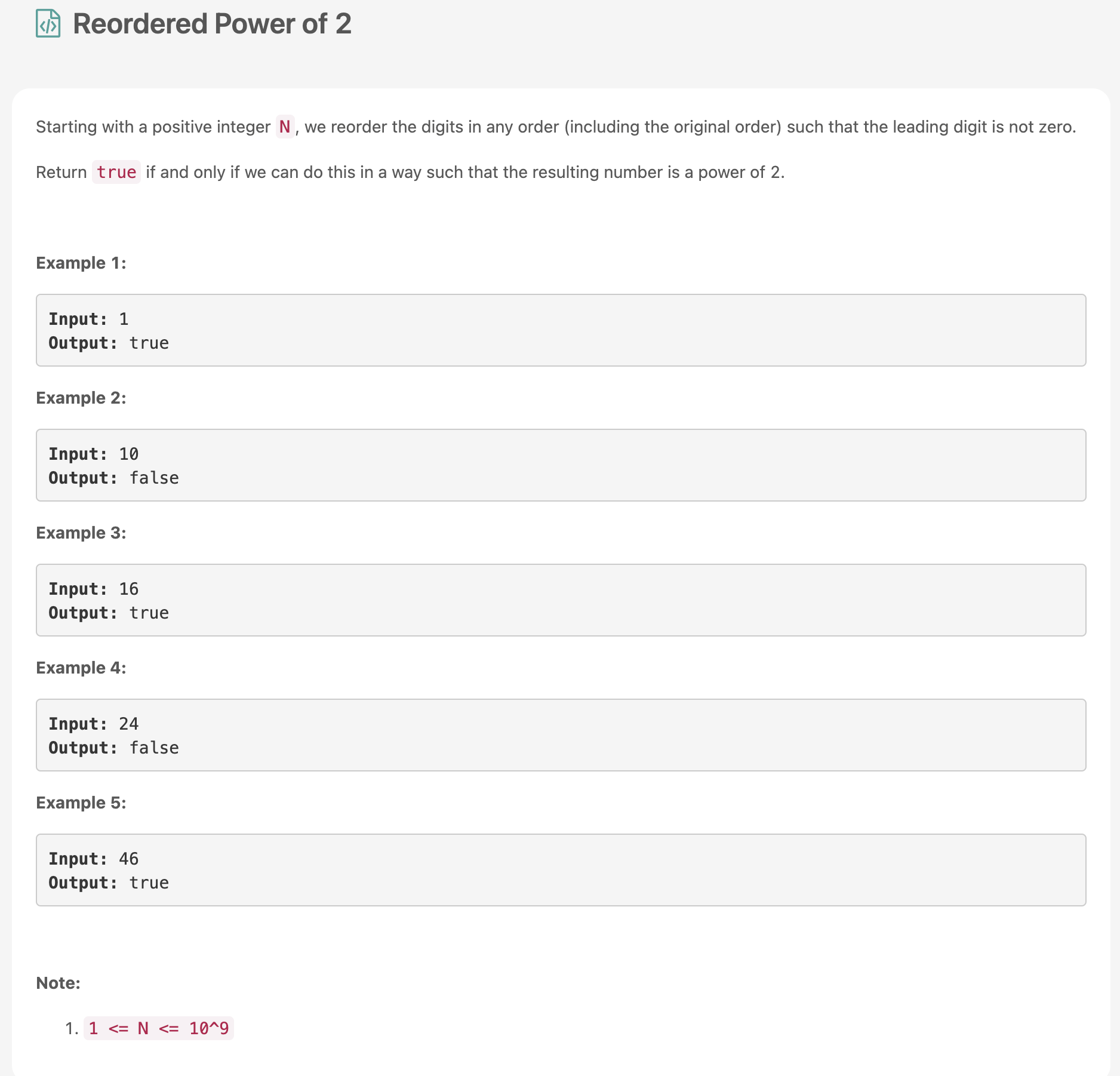
Time: O(log^2N), count(1 << i) logN, equals LogNSpace: O(Log^N), why? there are 30 arrays for power of 2s < 10000000000
59.[leetcode] Design Circular Queue
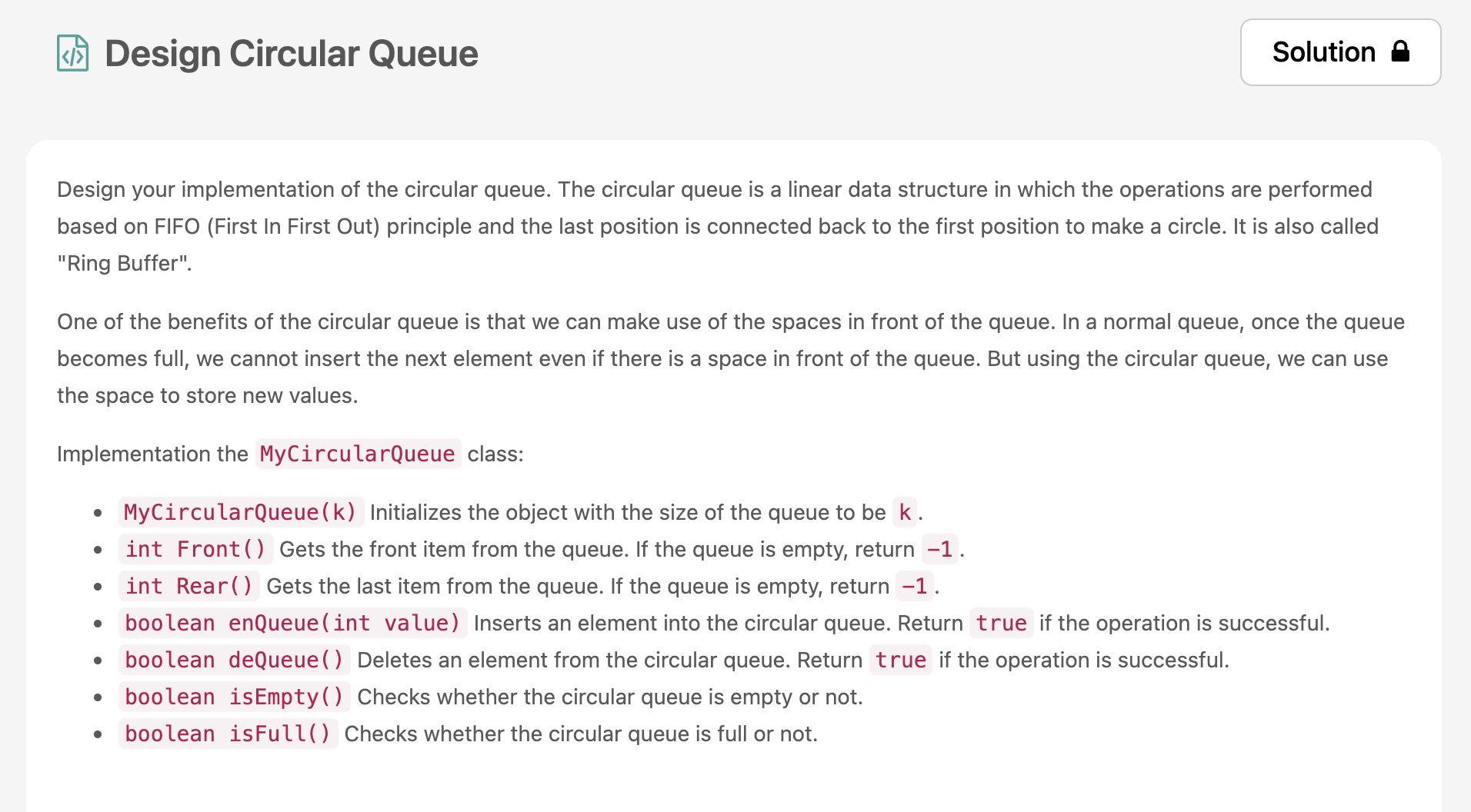
Time: O(N), deleteSpace: O(N)
60.[leetcode] Global and Local Inversions

problem code 1st try: check A[i] > A[i +2], if yes, return false
61.[leetcode] Minimum Operations to Make Array Equal
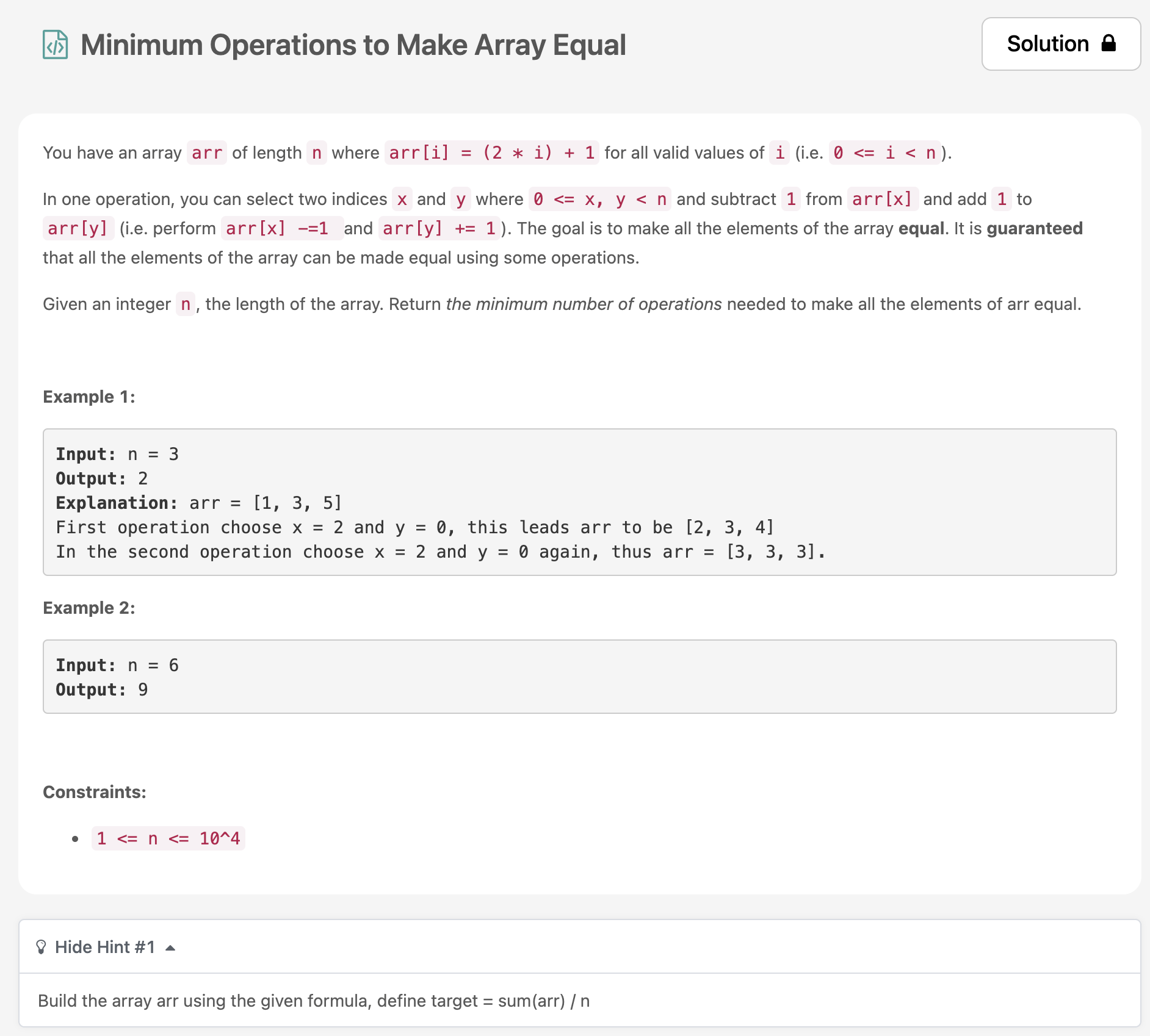
Time: O(1)Space: O(1)
62.[leetcode]
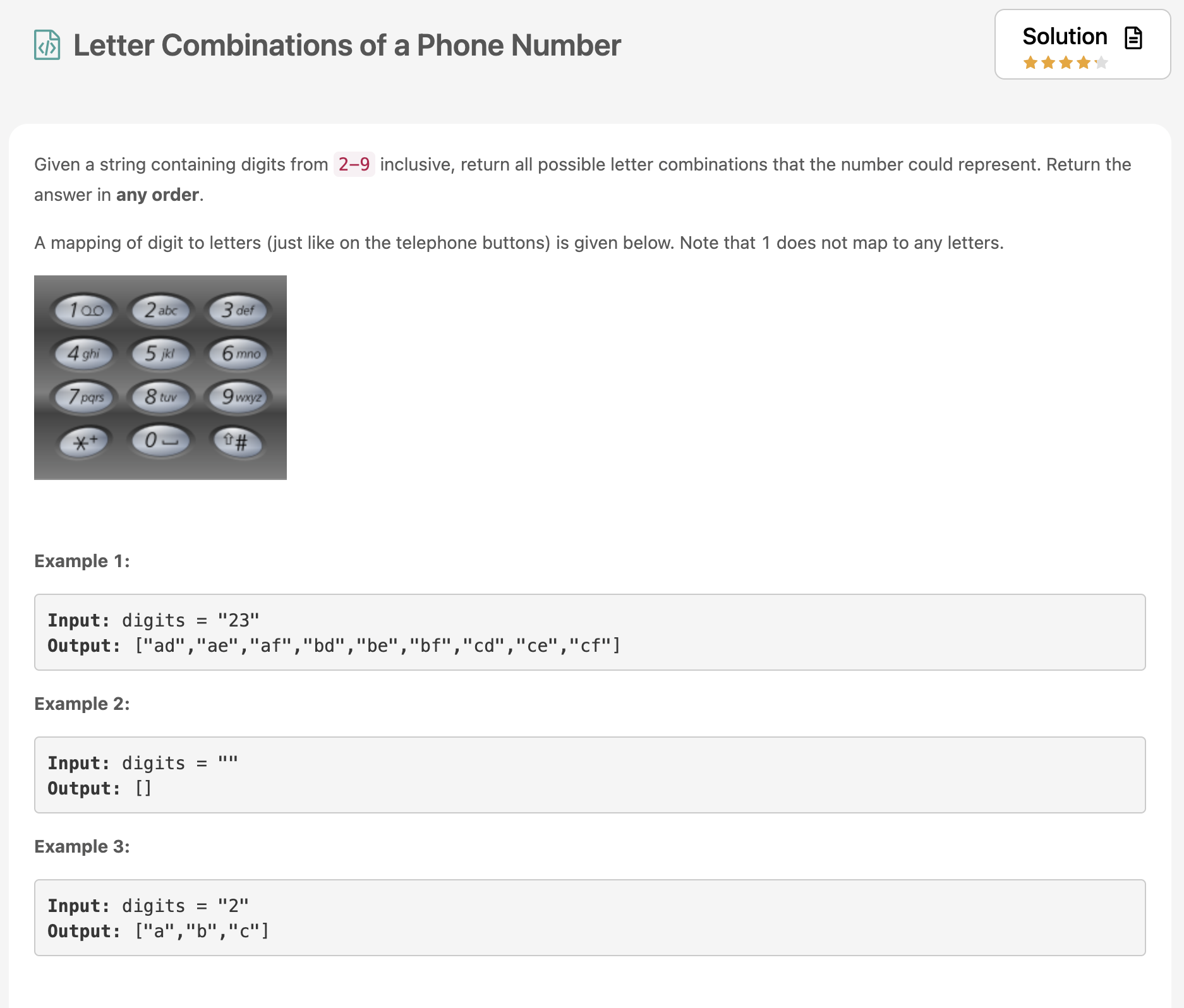
Time: O(4^4)space: O(4^4)
63.[leetcode] Deepest Leaves Sum
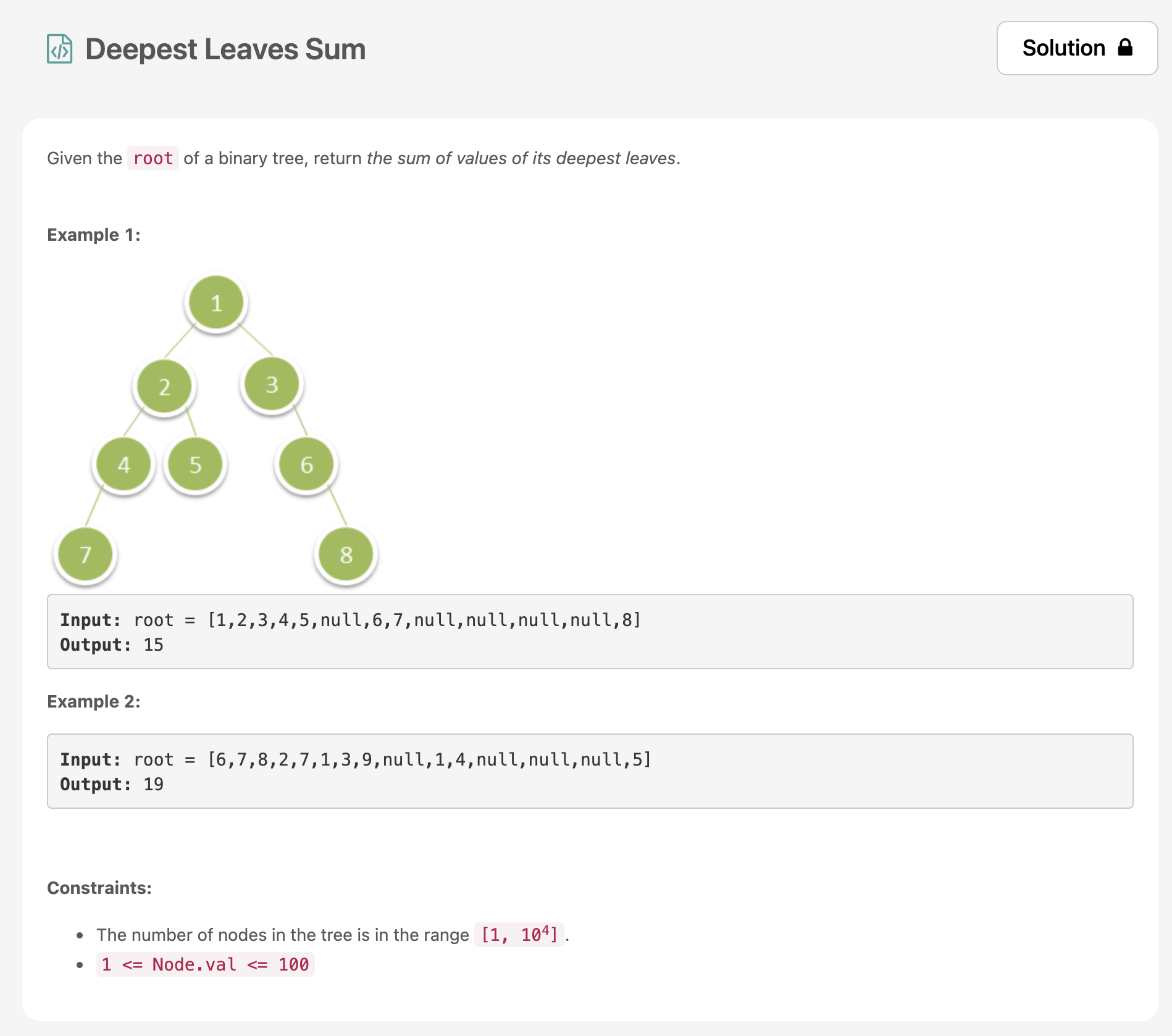
problem